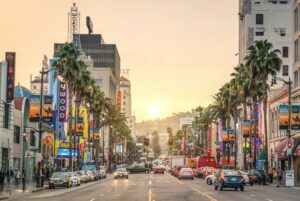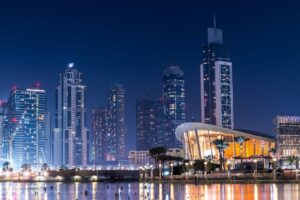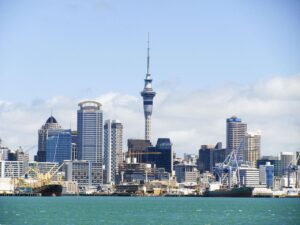Amsterdam, the enchanting capital of the Netherlands, seamlessly blends historic charm with modern sophistication. From its iconic canal rings and world-renowned museums to its vibrant neighborhoods and hidden courtyards, this city offers countless experiences for every type of traveler. Whether you’re planning your first visit or returning to explore more of what this remarkable city has to offer, this comprehensive guide to the top 10 places to visit in Amsterdam will help you craft the perfect itinerary.
Why Amsterdam Should Be on Your Travel Bucket List
Before diving into the top 10 places to see in Amsterdam, it’s worth understanding what makes this city so special. Amsterdam is a place where centuries-old architecture stands alongside contemporary design, where cyclists outnumber cars, and where cultural treasures are around every corner. The city’s compact size makes it incredibly walkable, yet it’s dense with attractions that could fill weeks of exploration.
The Dutch capital welcomes over 20 million visitors annually, drawn by its unique atmosphere, liberal culture, and extraordinary concentration of art and history. Unlike many European capitals, Amsterdam maintains an intimate, almost village-like feel despite its cosmopolitan character. The city’s famous tolerance, innovative spirit, and quality of life consistently rank it among the world’s most livable cities.
TL;DR – Quick Links to the Top 10 Places to Visit in Amsterdam
- The Anne Frank House (Google Maps)
- The Rijksmuseum (Google Maps)
- Van Gogh Museum (Google Maps)
- Amsterdam’s Canals (Google Maps)
- Jordaan (Google Maps)
- Dam Square and Royal Palace (Google Maps)
- Vondelpark (Google Maps)
- Albert Cuyp Market (Google Maps)
- The Red Light District (De Wallen) (Google Maps)
- Amsterdam Museums (Google Maps)
1. The Anne Frank House: A Moving Journey Through History
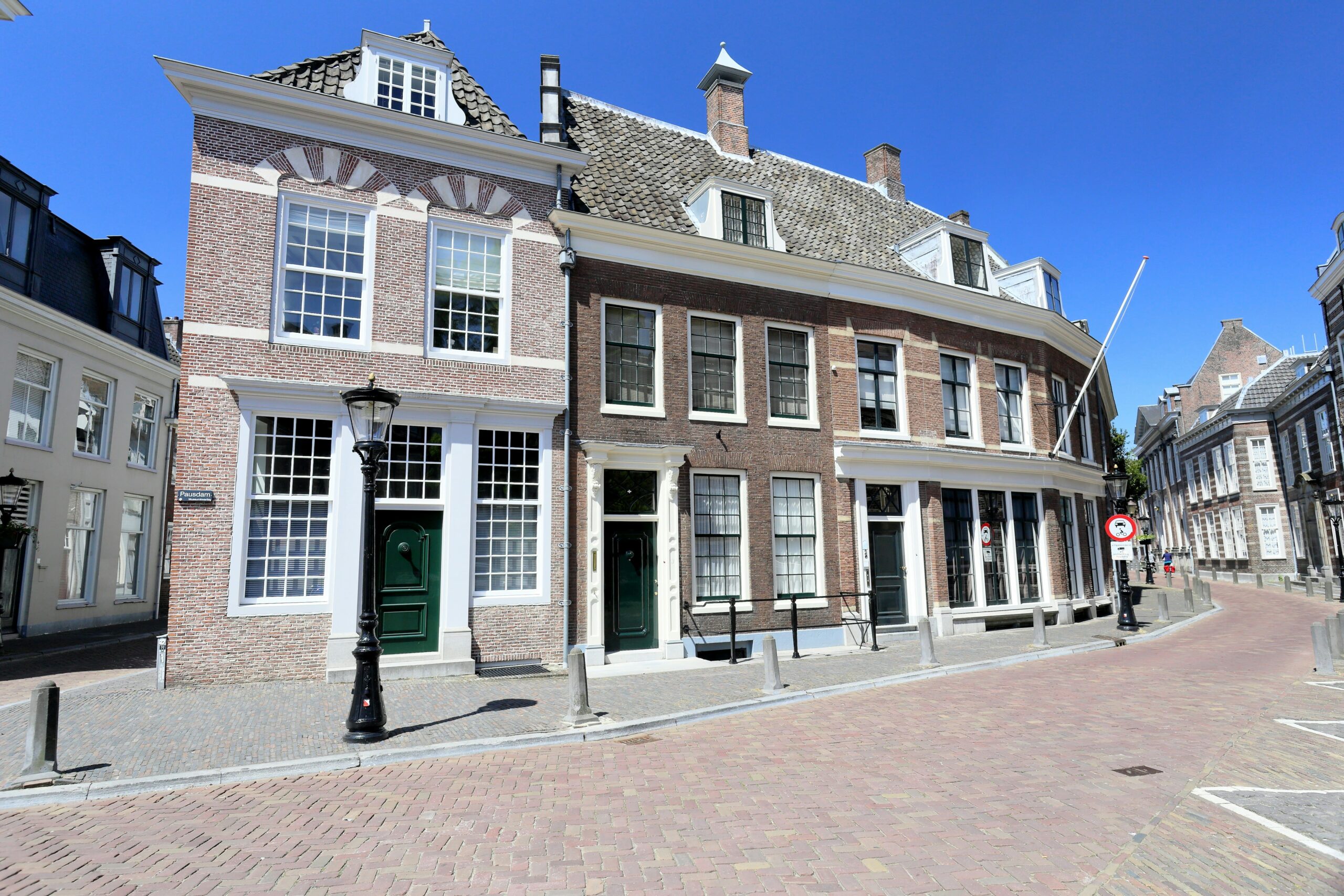
No list of the top 10 places to visit in Amsterdam would be complete without the Anne Frank House. Located at Prinsengracht 263-267, this historic house museum stands as one of the most powerful Holocaust memorials in the world. Behind its unassuming canal-side facade lies the Secret Anne, where Anne Frank, her family, and four others hid from Nazi persecution for over two years during World War II.
What Makes It Essential:
Visiting the Anne Frank House is an emotional and educational experience that brings history to life in the most intimate way possible. You’ll walk through the actual rooms where Anne wrote her famous diary, see the original bookcase that concealed the entrance to the hiding place, and witness personal artifacts that humanize this tragic period of history. The museum has been meticulously preserved to honor Anne’s memory and educate visitors about the dangers of discrimination and persecution.
The permanent exhibition includes photographs, documents, and film footage that provide context about the Frank family’s life before hiding, the conditions they endured in the Secret Annex, and the aftermath of their betrayal and arrest. Anne’s original diary, with her handwriting visible on the pages, is displayed in a climate-controlled case a poignant reminder of the young girl’s dreams, fears, and extraordinary spirit.
Amsterdam Travel Tips for Visiting:
The Anne Frank House is one of Amsterdam’s most popular attractions, receiving over 1.3 million visitors annually. Tickets must be booked online in advance, typically several weeks ahead, as they sell out quickly. The museum releases tickets at specific times, so check their official website regularly. Tickets are released two months in advance at 10:00 AM CET on the first Tuesday of each month.
Plan for at least 90 minutes to two hours for your visit. The house involves climbing steep stairs there is no elevator so be prepared for narrow, historic Dutch staircases. Photography is not permitted inside to maintain the solemn atmosphere and protect the artifacts.
Consider visiting during winter months or on weekday evenings when crowds are lighter. The museum stays open until 10:00 PM most days, and evening visits offer a more contemplative experience. Audio guides are included with admission and available in multiple languages.
Practical Information:
- Location: Westermarkt 20, 1016 GV Amsterdam
- Nearest Tram: Lines 13, 14, 17 to Westermarkt
- Booking: Online only via annefrank.org
- Duration: 1.5-2 hours
- Accessibility: Not wheelchair accessible due to historic building constraints
2. The Rijksmuseum: Netherlands’ Crown Jewel of Art
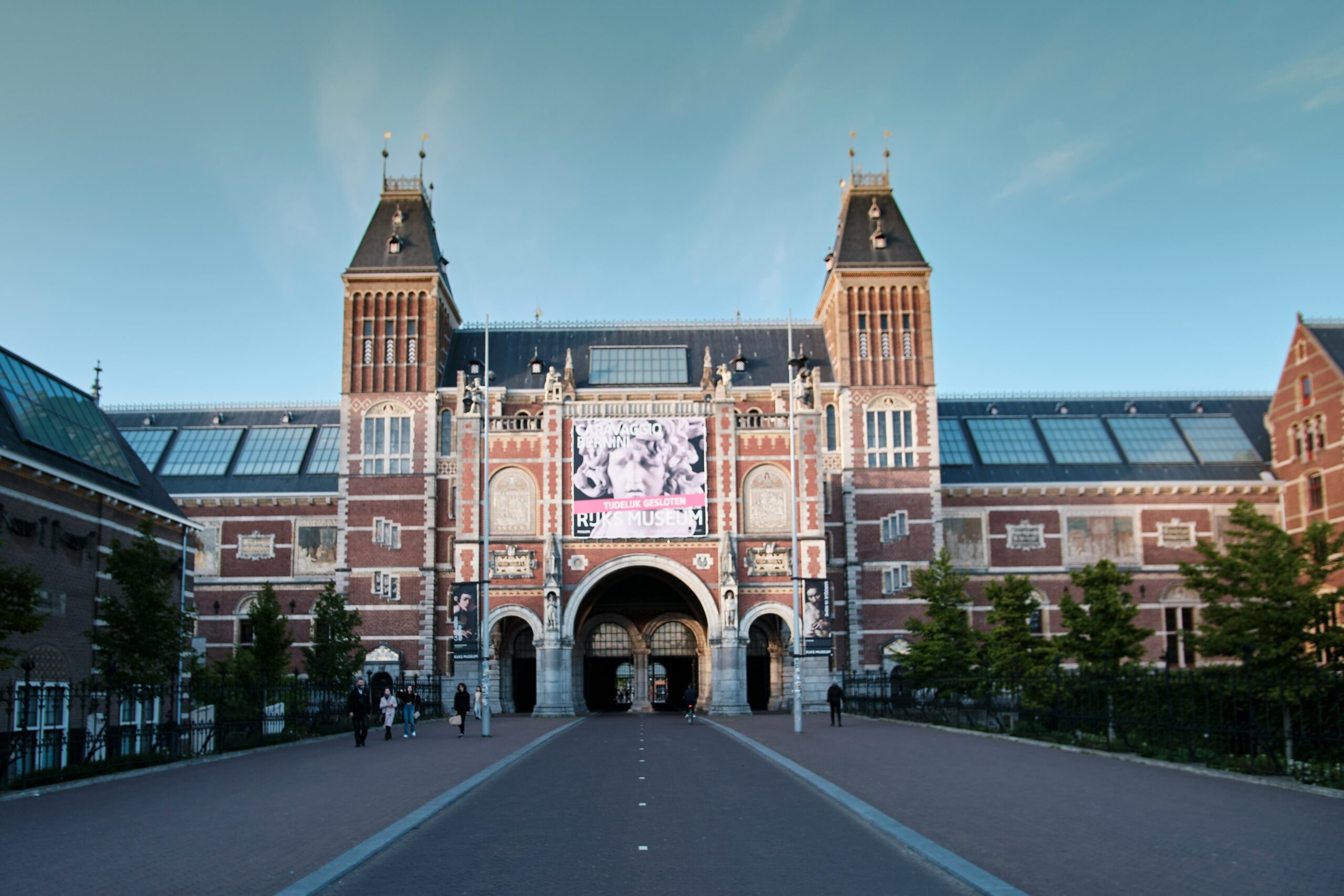
The Rijksmuseum stands as the Netherlands’ most prestigious museum and one of Europe’s finest art institutions. Housing over 8,000 objects in 80 galleries, this magnificent Gothic-Renaissance building showcases 800 years of Dutch and international art and history. When considering what to do in Amsterdam, dedicating substantial time to this cultural treasure should be high on your list.
Masterpieces You Cannot Miss:
The museum’s collection includes some of the most celebrated paintings in Western art history. Rembrandt’s “The Night Watch” commands an entire gallery and remains the museum’s most famous work. This monumental painting, properly titled “Militia Company of District II under the Command of Captain Frans Banninck Cocq,” revolutionized group portraiture with its dynamic composition and dramatic use of light.
Beyond Rembrandt, the museum houses works by Johannes Vermeer, including “The Milkmaid” and “The Little Street,” both quintessential examples of Dutch Golden Age painting. Franz Hals’ portraits, Jan Steen’s lively scenes of Dutch domestic life, and Jacob van Ruisdael’s landscape masterpieces fill the galleries with extraordinary talent.
The museum’s collection extends far beyond painting. You’ll find Delftware ceramics, intricate dollhouses that miniaturize entire 17th-century homes, ship models, Asian art pavilions, medieval sculptures, and a fascinating fashion gallery. The Special Collections include prints, drawings, and photographs spanning centuries.
Architecture and Gardens:
The building itself, designed by Pierre Cuypers and opened in 1885, is an architectural masterpiece. After a decade-long renovation completed in 2013, the museum combines restored historic spaces with contemporary galleries. The central atrium, with its soaring glass roof, creates a light-filled space that connects the museum’s two courtyards.
Don’t miss the Rijksmuseum Gardens, free to visit year-round. These sculpted gardens feature artworks, hedge mazes, and seasonal plantings. The gardens offer a peaceful respite and connect to Museum Square (Museumplein), Amsterdam’s cultural heart.
Making the Most of Your Visit:
With such an extensive collection, the Rijksmuseum can be overwhelming. Consider taking a highlights tour (approximately two hours) that covers the masterworks, or use the museum’s free multimedia guide to create your own route. The museum offers tours in multiple languages and specialized tours focusing on specific periods or themes.
Art historians and enthusiasts could easily spend an entire day here, but most visitors allocate three to four hours. Arrive when the museum opens at 9:00 AM for the most peaceful experience, especially in the Gallery of Honour, where “The Night Watch” resides.
The museum’s cafes and restaurants provide options from quick bites to formal dining. The Rijksmuseum Shop offers an exceptional selection of art books, reproductions, and Dutch design objects.
Visitor Essentials:
- Location: Museumstraat 1, 1071 XX Amsterdam
- Hours: Daily 9:00 AM – 5:00 PM
- Tickets: Book online to skip lines; various ticket types available
- Photography: Allowed without flash in most galleries
- Facilities: Coat check, lockers, multiple dining options, extensive accessibility services
3. Van Gogh Museum: Journey into the Mind of a Genius
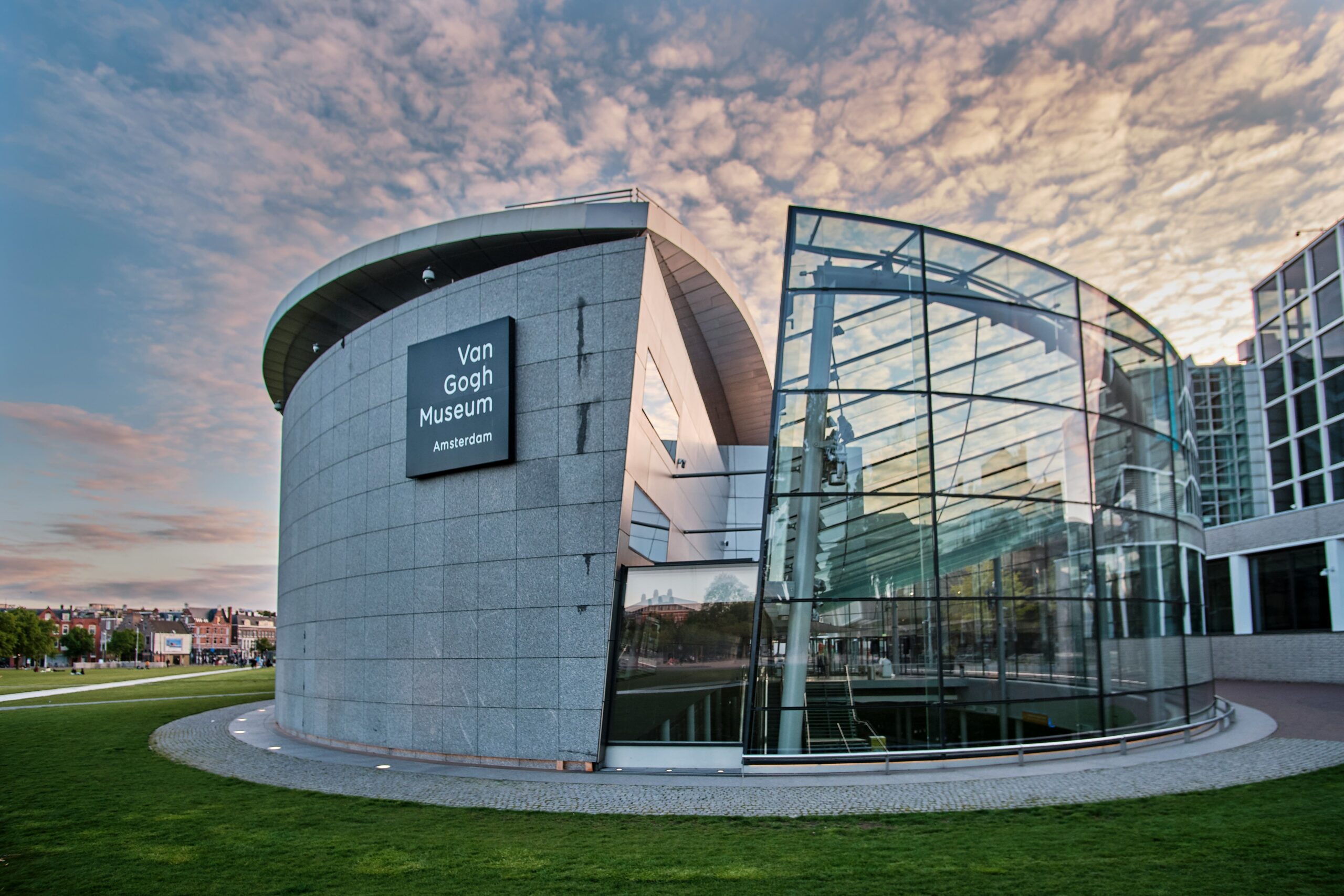
The Van Gogh Museum houses the world’s largest collection of works by Vincent van Gogh, making it an essential stop on any list of top 10 places to visit in Amsterdam. This purpose-built museum contains over 200 paintings, 500 drawings, and 750 letters by the Dutch post-impressionist master, alongside works by his contemporaries and artists who influenced him.
A Chronological Journey:
The permanent collection is arranged chronologically, allowing visitors to trace Van Gogh’s artistic evolution from his early dark, somber works to the vibrant, expressive paintings that defined his later years. You’ll see how his palette lightened dramatically after his move to Paris in 1886, where he encountered Impressionism and Japanese prints.
Key works include multiple self-portraits that reveal Van Gogh’s psychological state throughout his career, “The Bedroom,” “Almond Blossoms,” “Wheatfield with Crows,” “Sunflowers,” and “The Potato Eaters.” Each painting is contextualized with information about Van Gogh’s life, mental state, and artistic influences during that period.
Understanding Vincent:
What makes this museum particularly special is how it humanizes Van Gogh beyond the tortured artist narrative. Through his letters, primarily correspondence with his brother Theo, you gain insight into Vincent’s thoughts on art, life, and his struggles with mental illness and poverty. The museum presents a nuanced portrait of a dedicated artist who was constantly experimenting and pushing boundaries.
The museum also explores Van Gogh’s relationships with other artists, including Paul Gauguin, Émile Bernard, and Henri de Toulouse-Lautrec. Seeing works by these contemporaries alongside Van Gogh’s paintings provides valuable context about the artistic movements of the late 19th century.
Special Exhibitions:
Beyond the permanent collection, the Van Gogh Museum hosts world-class temporary exhibitions that explore Van Gogh’s influence on later artists or examine his work through new scholarly lenses. These exhibitions have covered everything from Van Gogh’s relationship with Japanese art to his influence on contemporary artists.
Planning Your Visit:
The Van Gogh Museum is incredibly popular, especially during the summer months and school holidays. Advance online booking with a time slot is mandatory; the museum does not sell tickets at the door. Book several weeks in advance during peak season.
Expect to spend at least two to three hours exploring the collection thoroughly. Audio guides are available and highly recommended, as they provide rich detail about individual works and Van Gogh’s life story. The museum offers multimedia guides that include videos and interactive content.
Visit on Friday evenings when the museum stays open until 9:00 PM for a more atmospheric experience. The Museum Shop is exceptional, offering everything from art prints and books to Van Gogh-inspired design objects and fashion.
Essential Details:
- Location: Museumplein 6, 1071 DJ Amsterdam
- Hours: Daily 9:00 AM – 5:00 PM (until 9:00 PM on Fridays)
- Tickets: Online booking with a time slot required
- Combined Tickets: Available with other museums
- Accessibility: Fully wheelchair accessible with elevators and accessible restrooms
4. Amsterdam’s Canals: The City’s Liquid Streets
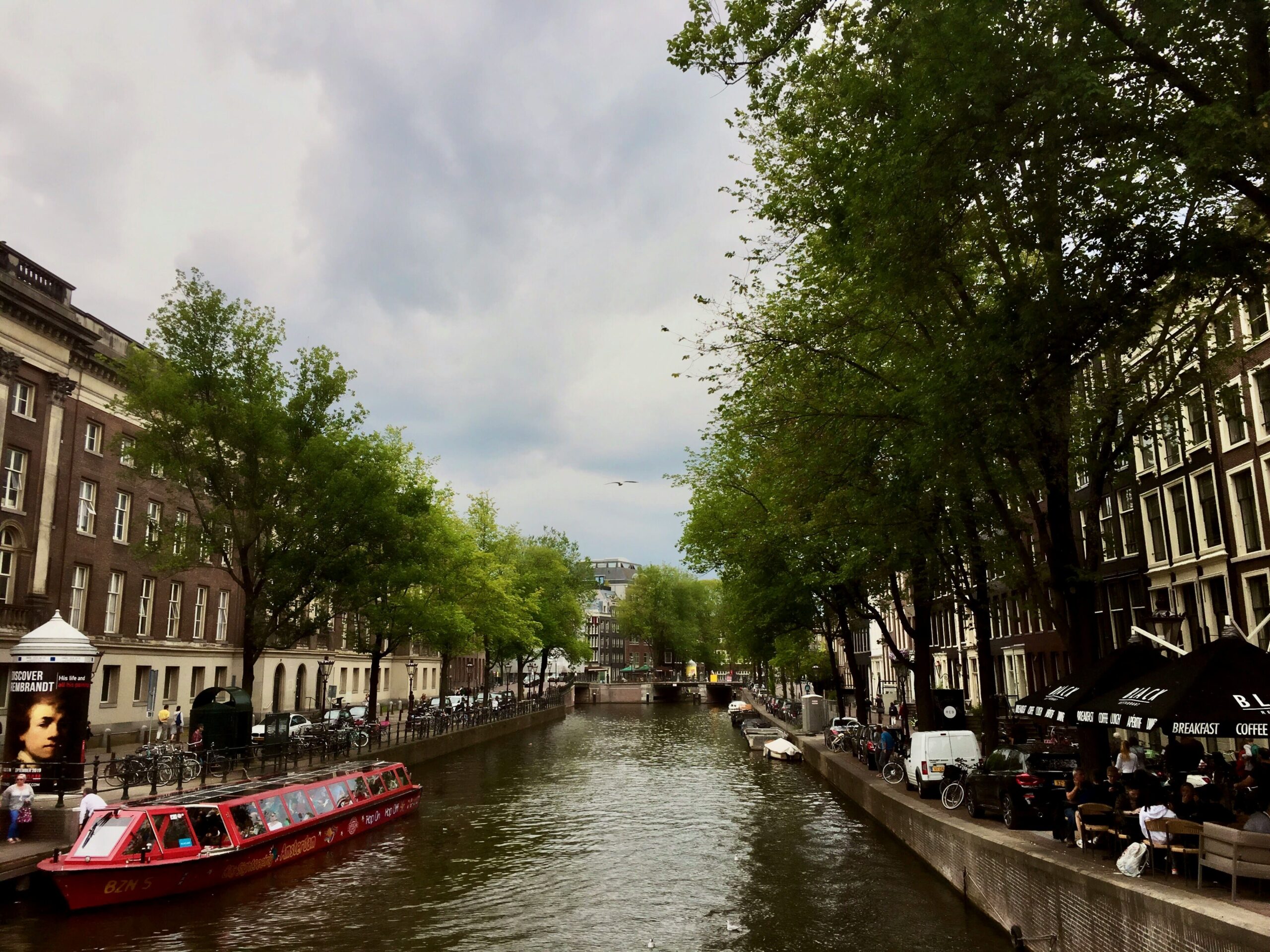
Amsterdam’s canal system, a UNESCO World Heritage site since 2010, represents one of the most distinctive and beautiful urban landscapes in the world. The canal ring (Grachtengordel), constructed during the Dutch Golden Age in the 17th century, consists of four main concentric semicircles: Singel, Herengracht, Keizersgracht, and Prinsengracht. Exploring these waterways is unquestionably one of the top 10 places to see in Amsterdam, though it’s more of an experience than a single location.
The Engineering Marvel:
Amsterdam sits two meters below sea level, making its canal system not just decorative but essential for water management and land reclamation. The city has over 165 canals totaling more than 100 kilometers, spanned by approximately 1,500 bridges. This intricate network took decades to plan and construct, representing 17th-century Dutch engineering at its finest.
The canals were originally designed for defense, water management, and the transportation of goods. Wealthy merchants built elegant townhouses along the main canals, with warehouses near the water for easy loading and unloading. Today, these historic canal houses, with their distinctive narrow facades and ornate gables, create the picture-perfect Amsterdam streetscape.
Experiencing the Canals:
There are numerous ways to experience Amsterdam’s canals, each offering different perspectives on this aquatic city:
Canal Cruises: The most popular way to see the canals is by taking a boat tour. Options range from large tour boats with audio guides to smaller, more intimate vessels. Classic canal cruises last about an hour and pass major landmarks while providing historical commentary. Evening cruises offer a romantic perspective when the canal houses and bridges are illuminated.
For a more unique experience, consider dinner cruises, cocktail cruises, or even pizza boat tours. In winter, some operators offer enclosed heated boats, making canal cruising enjoyable year-round.
Private Boat Rental: Amsterdam has several companies that rent small electric boats that you can captain yourself (no license required). These whisper boats accommodate four to twelve people and allow you to explore at your own pace. This option is perfect for families or groups wanting a personalized experience.
Canal Kayaking or Stand-Up Paddleboarding: For active travelers, several operators offer kayak or SUP board rentals with guided tours. This gives you a water-level view of the city and allows access to narrower canals that larger boats cannot navigate.
Canalside Walking: Simply walking alongside the canals costs nothing and offers intimate views of daily Amsterdam life. The Nine Streets (De Negen Straatjes) area, the Jordaan neighborhood, and the stretch of Herengracht between Leidsestraat and Vijzelstraat showcase particularly beautiful canal architecture.
The Most Photogenic Canal Spots:
Certain locations along Amsterdam’s canals are particularly stunning:
- Brouwersgracht: Where seven canals intersect, offering layered views of bridges and houseboats
- Leidsegracht and Keizersgracht intersection: Features the famous seven bridges viewpoint
- Reguliersgracht: The canal with seven consecutive arched bridges visible in one sight line
- Magere Brug (Skinny Bridge): Amsterdam’s most photographed bridge, especially beautiful when illuminated at night
- Herengracht’s “Golden Bend”: The stretch between Leidsestraat and Vijzelstraat featuring Amsterdam’s grandest canal houses
Canal House Museums:
Several historic canal houses have been converted into museums, allowing you to step inside these architectural treasures. The Museum Van Loon offers a glimpse into aristocratic life in a beautifully preserved double-width canal house. The Willet-Holthuysen Museum showcases a wealthy merchant family’s home, complete with period rooms and formal gardens.
Seasonal Canal Experiences:
Amsterdam’s canals transform with the seasons, offering different experiences throughout the year. Spring brings tulips to canalside gardens and window boxes. Summer means open-air terraces, festivals, and the Amsterdam Canal Pride celebration. Autumn features golden foliage reflecting in the water. Winter occasionally brings the magical sight of frozen canals rare but unforgettable.
During Amsterdam Light Festival (late November to mid-January), international artists create light installations along the canals, turning the waterways into an illuminated open-air gallery. Special evening cruises showcase these temporary artworks.
Amsterdam Travel Tips for Canal Exploration:
Book canal cruises in advance during peak season, though you can often find last-minute availability. Cruises depart from multiple locations around the city center. Early morning or evening cruises offer softer light and fewer crowds.
Watch for cyclists when walking along canals, as bicycle paths often run parallel to the water. Canal walls have no barriers, so mind your step, especially after dark or after enjoying Amsterdam’s cafe culture.
If renting a private boat, be aware of canal navigation rules: stay right, respect speed limits, and watch for commercial vessels, which have the right of way.
5. Jordaan: Amsterdam’s Most Charming Neighborhood
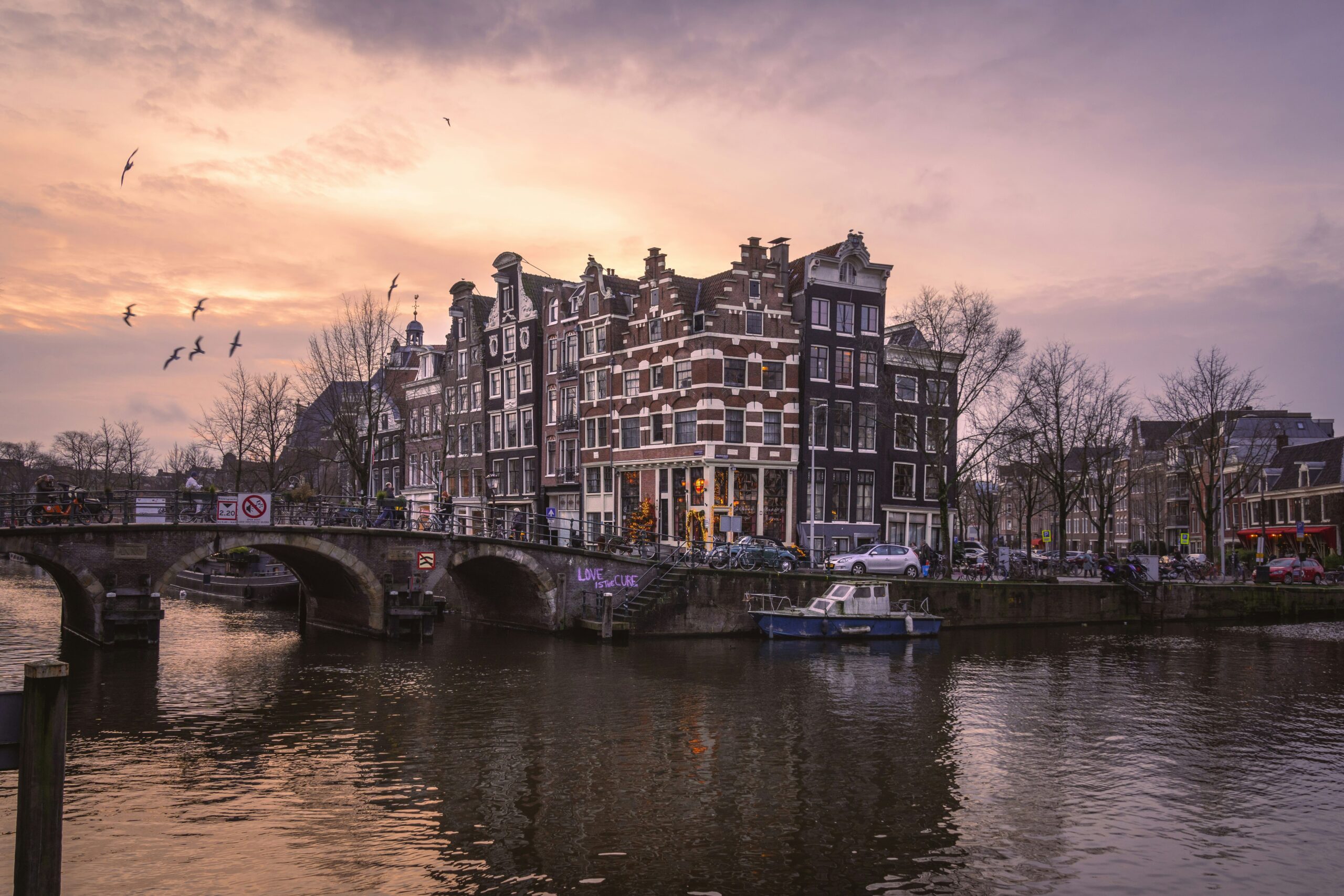
The Jordaan, once a working-class district, has evolved into one of Amsterdam’s most desirable and picturesque neighborhoods. This area perfectly embodies the hidden gems in Amsterdam that savvy travelers seek. Bounded by Brouwersgracht to the north, Prinsengracht to the east, and Lijnbaansgracht to the west, the Jordaan offers a more intimate, village-like Amsterdam experience.
Historical Character:
Built in the 17th century to house working-class immigrants and artisans, the Jordaan’s narrow streets and small canals contrast with the grand canal ring. The neighborhood’s name possibly derives from the French word “jardin” (garden), as many streets are named after flowers and plants Rozenstraat (Rose Street), Laurierstraat (Laurel Street), and Bloemgracht (Flower Canal).
Today, the Jordaan has gentrified significantly but retains its bohemian character. Artists, musicians, and creative professionals have long been drawn to its atmospheric streets. This blend of authenticity and sophistication makes it one of the top 10 places to visit in Amsterdam for those seeking to understand the city’s soul.
What to Do in the Jordaan:
Wander Without Purpose: The Jordaan rewards aimless wandering. Its maze of narrow streets reveals hidden courtyards (hofjes), independent boutiques, art galleries, and cozy cafes. Egelantiersgracht and Bloemgracht are particularly charming canals lined with typical Jordaan houses and houseboats.
Explore the Hofjes: These almshouse courtyards were built by wealthy merchants and guilds to house elderly women or poor families. About 20 hofjes survive in the Jordaan, most still serving as social housing. While these are private residences, several allow respectful visitors during daytime hours. Claes Claesz Hofje, Zon’s Hofje, and Karthuizerhofje offer glimpses into Amsterdam’s architectural and social history.
Visit the Noordermarkt: This square hosts different markets throughout the week. Monday mornings bring a flea market and antique market selling vintage clothing, books, curiosities, and collectibles. Saturday’s organic farmers’ market (Boerenmarkt) features local produce, artisanal cheeses, fresh bread, and prepared foods. The Noorderkerk (North Church), built in 1623, anchors the square architecturally.
Shop Independent Boutiques: The Jordaan excels in independent shopping. The Nine Streets (Negen Straatjes) area, which technically straddles the Jordaan’s eastern edge, features over 200 specialized shops in a compact grid. You’ll find vintage clothing, designer homeware, specialty foods, concept stores, and unique boutiques you won’t encounter elsewhere.
Rozengracht, Tweede Egelantiersdwarsstraat, and streets radiating from Westerstraat offer additional shopping opportunities focusing on local designers, vintage finds, and artisanal goods.
Discover Art Galleries: The Jordaan houses numerous small art galleries representing contemporary artists. Many are artist-run spaces or gallery-studios where you can meet the creators. First Saturdays often feature gallery openings with receptions.
Enjoy the Cafe Culture: The neighborhood is known for its brown cafes (traditional Dutch pubs), named for their wood-paneled interiors darkened by age and tobacco smoke. Café ‘t Smalle, located in a historic jenever distillery building, offers canal views and traditional atmosphere. Café Papeneiland has served drinks since 1642. These establishments serve beer, spirits, and simple food in convivial settings.
For coffee culture, the Jordaan boasts excellent specialty coffee shops. Back to Black, CT Coffee & Coconuts (in a converted cinema), and Lot Sixty One Coffee Roasters represent Amsterdam’s thriving coffee scene.
Museums in the Jordaan:
Though smaller than the major museums, the Jordaan contains several worthwhile cultural institutions:
Anne Frank House: While mentioned separately, this museum is technically located on the Jordaan’s edge along Prinsengracht.
Houseboat Museum: Located on an actual houseboat on Prinsengracht, this museum explains what it’s like to live on Amsterdam’s waterways. You’ll learn about the practical aspects of houseboat living and the community of floating residents.
Pianola Museum: This unique museum celebrates the pianola (self-playing piano) with a collection of instruments and 30,000 music rolls. Demonstrations bring the instruments to life.
The Jordaan Festival:
If visiting in September, the Jordaan Festival celebrates the neighborhood’s culture with music performances in streets, squares, and cafes. This free festival showcases traditional Jordaan music, emotional, sing-along folk songs that are integral to local identity.
Dining in the Jordaan:
The Jordaan offers dining options from casual to upscale. Traditional Dutch restaurants serve stamppot (mashed potato dishes), bitterballen (meat croquettes), and other comfort foods. Indonesian restaurants reflect Holland’s colonial history. Contemporary restaurants showcase farm-to-table and seasonal menus.
Notable dining experiences include Moeders (traditional Dutch home cooking with walls covered in family photos), De Reiger (an authentic brown cafe with excellent food), and Toscanini (serving exceptional Italian cuisine for decades).
Amsterdam Travel Tips for the Jordaan:
The Jordaan is best explored on foot or by bicycle. The area is west of Amsterdam’s Central Station, easily reached by walking across the canal ring or taking trams 13, 14, or 17.
Visit on Saturday mornings to experience the Noordermarkt at its liveliest, then spend the afternoon exploring shops and galleries. Alternatively, come on Monday mornings for the flea market.
Many shops close on Sundays or open later in the day. Cafes and restaurants remain open throughout the week.
The Jordaan is a residential neighborhood, so keep noise levels reasonable, especially in the evening. When peeking into hofjes, remember that people live there, be respectful of privacy.
6. Dam Square and the Royal Palace: Amsterdam’s Historic Heart
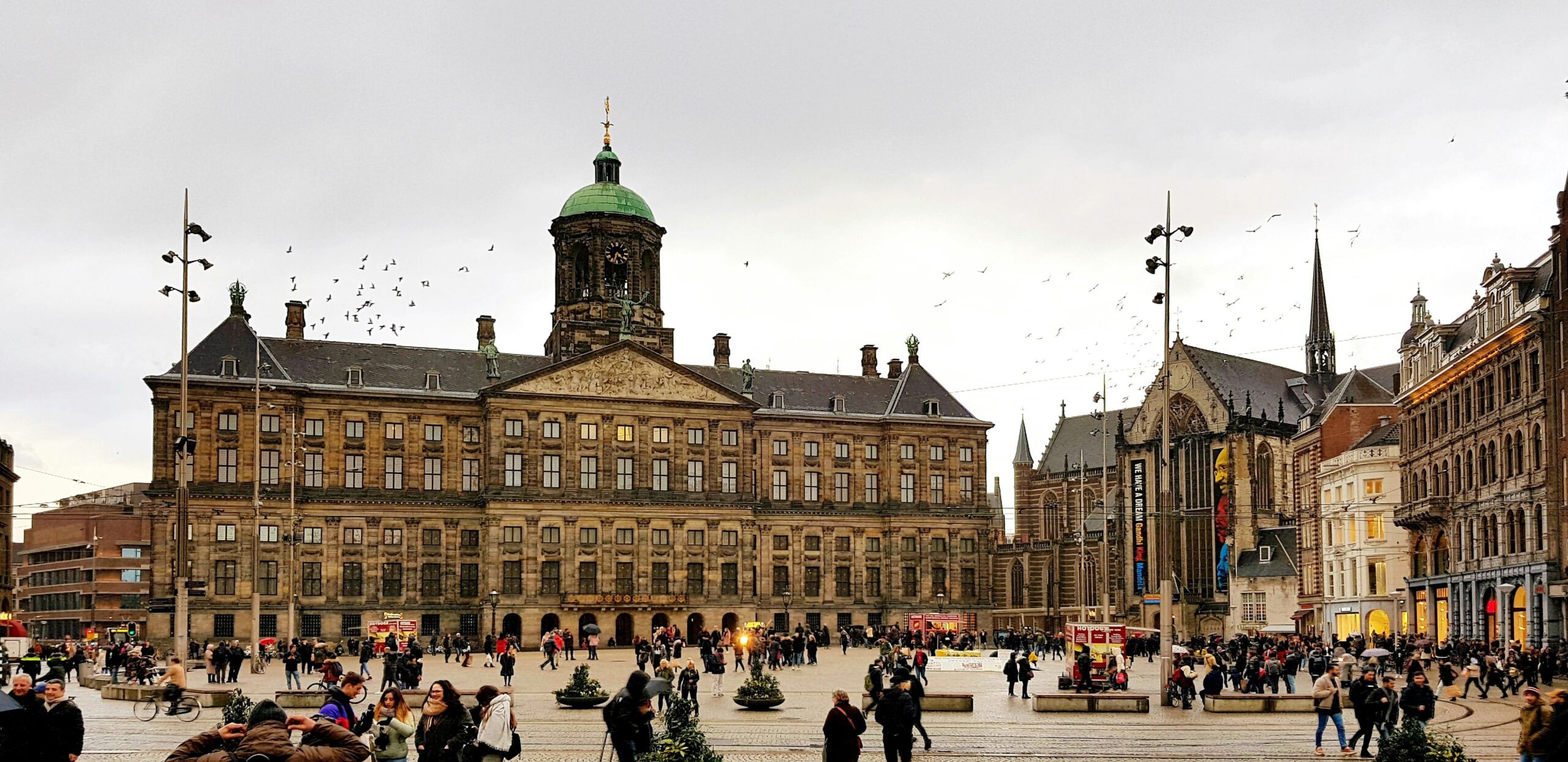
Dam Square (De Dam) functions as Amsterdam’s civic heart and has been the city’s focal point since the 13th century. The square sits on the site of the original dam built across the Amstel River, which gave Amsterdam its name. Today, Dam Square represents one of the top 10 places to visit in Amsterdam for its concentration of historic buildings, constant activity, and central location.
The Royal Palace (Koninklijk Paleis):
Dominating the square’s western side, the Royal Palace Amsterdam stands as an architectural masterpiece of the Dutch Golden Age. Designed by Jacob van Campen and completed in 1665, the building originally served as Amsterdam’s city hall, reflecting the city’s wealth and power during the 17th century.
The palace’s exterior showcases Dutch Classicism with its symmetrical design, sandstone facades, and massive scale. The central pediment features sculptures representing Amsterdam receiving tribute from four continents, a bold statement of global trade dominance.
The interior exceeds even the grand exterior in splendor. The Citizen’s Hall (Burgerzaal), spanning the building’s full height, features marble floors inlaid with maps of the celestial and terrestrial spheres. This soaring space, with its classical proportions and magnificent artwork, was designed to awe visiting dignitaries with Amsterdam’s importance.
Throughout the palace, you’ll find paintings by Rembrandt’s pupils, allegorical ceiling paintings, Empire-style furniture, and decorative arts. The Tribunal chamber, where death sentences were once pronounced, features powerful paintings depicting justice and punishment.
Today, the palace serves as an official residence of the Dutch royal family, used for state visits, official receptions, and award ceremonies. When not hosting royal functions, it’s open to the public. Visiting the Royal Palace offers insight into both the Dutch Golden Age and the modern constitutional monarchy.
Other Dam Square Landmarks:
Nieuwe Kerk (New Church): Despite its name, this Gothic church dates to 1408, “new” only in comparison to the Oude Kerk (Old Church) in the Red Light District. The Nieuwe Kerk hosts Dutch royal coronations and weddings. Without a congregation since 1980, it now functions as an exhibition space hosting art, cultural, and historical exhibitions. The church’s organ, one of Europe’s finest, is featured in regular concerts.
National Monument: This 22-meter white stone obelisk, erected in 1956, commemorates Dutch World War II casualties. The monument serves as a gathering point for national remembrance ceremonies, particularly on Remembrance Day (May 4th). Reliefs on the monument depict war, peace, and resistance.
Madame Tussauds Amsterdam: Located on the square’s east side, this branch of the famous wax museum allows visitors to pose with lifelike figures of celebrities, historical figures, and Dutch cultural icons.
The Square’s Atmosphere:
Dam Square buzzes with activity from dawn to late evening. Street performers entertain crowds, vendors sell souvenirs, and both locals and tourists cross the square constantly. Major events, demonstrations, and celebrations frequently take place here. The square serves as a transportation hub with multiple tram lines converging nearby.
During King’s Day (April 27th), the Netherlands’ national celebration, Dam Square becomes a focal point for festivities with concerts, orange-clad crowds, and a carnival atmosphere. In December, holiday markets transform the square.
Surrounding Dam Square:
The streets radiating from Dam Square contain significant shopping, dining, and cultural attractions. Damrak runs north to Central Station, lined with shops, restaurants, and tourist services. Rokin extends south toward Muntplein, featuring art galleries and upscale shops. Paleisstraat and Raadhuisstraat offer shopping streets with international brands alongside Dutch retailers.
The shopping streets Kalverstraat and Nieuwendijk/Nieuwezijds Voorburgwal attract crowds seeking fashion, electronics, and souvenirs. These pedestrianized streets provide car-free shopping and easy pedestrian flow.
Practical Visiting Information:
Dam Square is highly accessible, located in the city center with tram lines 2, 4, 11, 12, 13, 14, 17, and 24 stopping nearby. The square is about a 10-minute walk south of Central Station.
The Royal Palace opening hours vary based on official royal events, so check the palace website before visiting. When open, entry requires a ticket (modest fee), and audio guides in multiple languages are available.
Plan to spend 45 minutes to 90 minutes exploring the Royal Palace interior. Combined with time in Dam Square and the surrounding area, allocate at least two hours for this area.
Security is tight at royal and national monuments. Expect bag checks when entering the Royal Palace. Large bags may not be permitted, and no photography is allowed inside the palace.
7. The Red Light District (De Wallen): Beyond the Stereotype
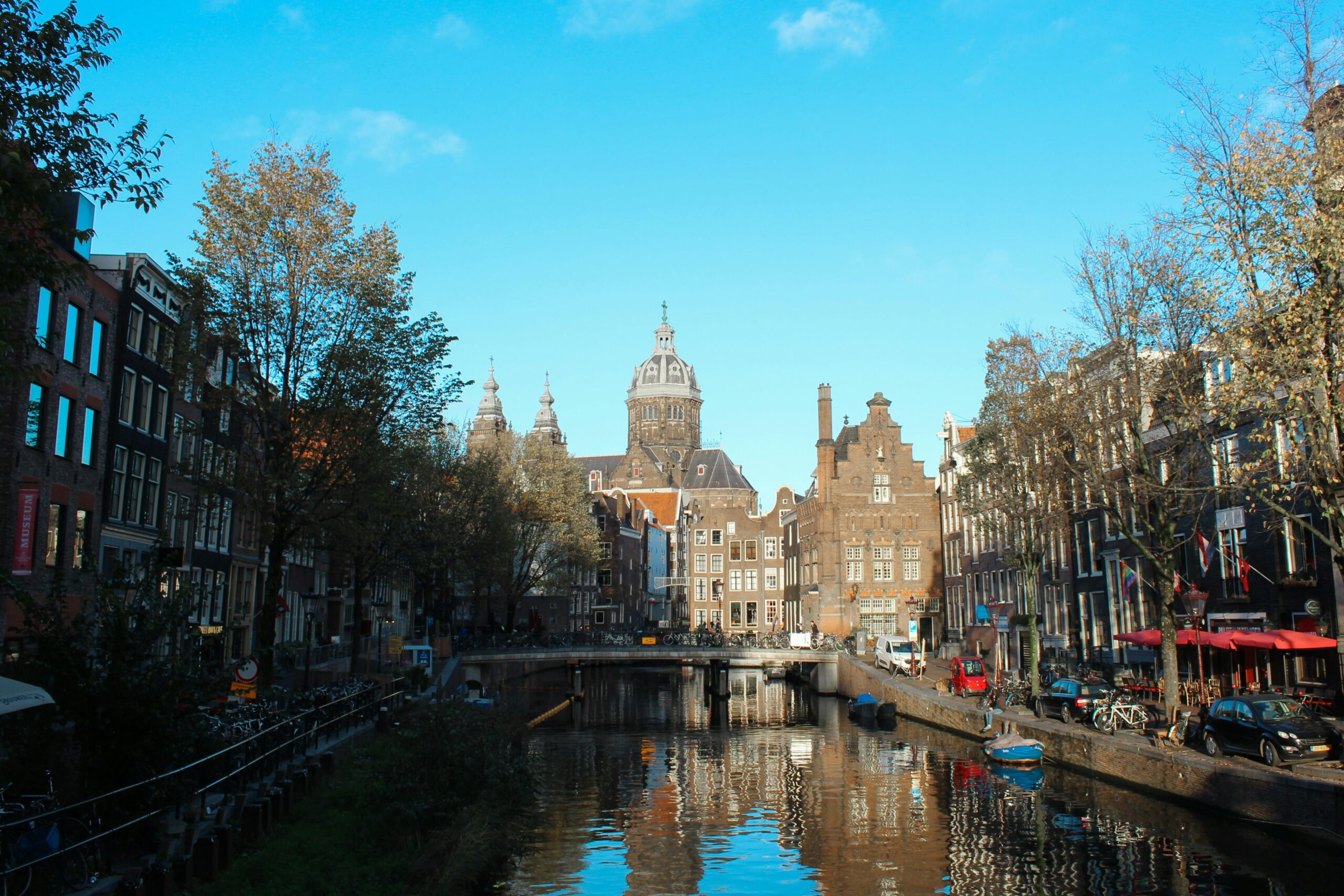
Amsterdam’s Red Light District, known locally as De Wallen, is one of the city’s oldest neighborhoods and, somewhat surprisingly, contains some of the hidden gems in Amsterdam that many visitors overlook in favor of its more notorious attractions. While famous worldwide for its legalized prostitution, canal-lit windows, and liberal attitudes, the area also holds significant historical and cultural value.
Understanding the District:
Prostitution has been legal and regulated in the Netherlands since 2000, though the Red Light District has served this purpose since the 14th century. The characteristic red-lit windows where sex workers ply their trade have become iconic symbols of Amsterdam’s pragmatic approach to vice. The Dutch philosophy emphasizes harm reduction, worker safety, and regulation over prohibition.
However, reducing De Wallen to just this one aspect misses the neighborhood’s depth. This is one of Amsterdam’s oldest areas, with beautiful canals, medieval buildings, and important cultural landmarks. The district represents layers of Amsterdam history, from its medieval origins through the Dutch Golden Age to contemporary challenges of overtourism and gentrification.
Historical and Cultural Attractions:
Oude Kerk (Old Church): Amsterdam’s oldest building, consecrated in 1306, stands incongruously in the Red Light District. This Gothic church, with its haunting tower visible throughout the area, contains remarkable 16th-century carved wooden ceiling panels, stained glass windows, and floor gravestones (including Rembrandt’s wife, Saskia’s). The church now functions as a cultural space hosting art exhibitions and concerts. The juxtaposition of sex workers’ windows directly adjacent to this medieval church captures Amsterdam’s unique character, tolerance, pragmatism, and lack of hypocrisy.
Museum Ons’ Lieve Heer op Solder (Our Lord in the Attic): This fascinating canal house museum preserves a complete 17th-century clandestine Catholic church hidden in the attic. After the Protestant Reformation, Catholics couldn’t worship publicly, so wealthy Catholics created hidden churches (schuilkerken). This beautifully preserved example includes a two-story church with a baroque altar, original paintings, and period rooms showing Golden Age domestic life. The museum ranks among Amsterdam’s most underrated attractions.
Chinatown: Amsterdam’s compact Chinatown centers on Zeedijk street, featuring Asian restaurants, supermarkets, and the Buddhist He Hua Temple. The Guang Ming (Light) Gate marks the entrance, and the neighborhood offers authentic Chinese, Thai, and Vietnamese dining.
De Waag (Weigh House): This medieval fortress gate, built in 1488, is Amsterdam’s oldest surviving secular building. Throughout centuries, it served various purposes: a weigh house for goods, a guild house, a museum, and a fire station. Today, it houses a restaurant-café. The building’s distinctive towers and castellated architecture make it one of Amsterdam’s most photographed structures.
Navigating the District Responsibly:
If you choose to explore the Red Light District, respect is paramount. Sex workers are conducting legal business and deserve dignity. Photography of the windows or workers is strictly forbidden and can result in serious confrontation. Many workers have placed signs explicitly prohibiting photos, and locals and security enforce this rule.
The area is safest during evening hours when most crowded. Paradoxically, fewer tourists late at night means less security presence. Keep valuables secure and be aware of your surroundings, as pickpockets operate in crowded areas.
Walking tours focused on the area’s history, architecture, and social issues provide context that surface-level visits miss. Several reputable tour companies offer guided walks that discuss Amsterdam’s approach to prostitution, the challenges sex workers face, and the district’s gentrification.
The Changing Red Light District:
Amsterdam has been gradually reducing the number of window brothels in De Wallen, with city policies prioritizing other businesses. This “Project 1012” (named after the postal code) aims to combat human trafficking and organized crime while diversifying the area’s economy. Fashion boutiques, galleries, and upscale restaurants increasingly occupy former window spaces.
This gentrification process is controversial. Some argue it improves the neighborhood and protects vulnerable people; others contend it merely moves problems elsewhere while erasing Amsterdam’s characteristic tolerance. Visiting the area today means witnessing this transition firsthand.
Other Attractions and Experiences:
Cannabis Coffee Shops: While not exclusive to the Red Light District, many of Amsterdam’s famous coffee shops (cannabis cafes) operate here. These establishments legally sell marijuana and hashish for personal consumption. Tourists can visit, but consumption in public spaces outside the coffee shops is technically illegal.
Red Light Secrets Museum: This small museum explains the reality of sex work in Amsterdam from workers’ perspectives. Located in a former brothel, the museum uses interactive displays, personal stories, and artifacts to educate visitors about the legal sex industry.
Nightlife: Beyond sex work, the Red Light District features bars, pubs, and nightclubs. Some are historic brown cafes; others are raucous tourist bars. The area attracts bachelor/bachelorette parties and younger crowds, creating a party atmosphere, especially on weekends.
Dining Options: The district contains surprisingly good restaurants, particularly around Zeedijk and Nieuwmarkt square. Options range from traditional Dutch to international cuisine, with particularly strong Asian food offerings in Chinatown.
Amsterdam Travel Tips for De Wallen:
Visit during the daytime to appreciate the architecture and historical sites without the crowds and party atmosphere. The Oude Kerk and Museum Ons’ Lieve Heer op Solder are best experienced in morning quiet.
Be cautious with alcohol and drug consumption. While cannabis is legal in coffee shops, combining it with alcohol can impair judgment. Be aware that some bars and street dealers may sell hard drugs, which remain illegal.
Ignore touts and people offering “special” club access, drug deals, or too-good-to-be-true services. Stick to established venues and trust your instincts.
The Red Light District is compact and easily explored on foot. It’s roughly bounded by Zeedijk, Kloveniersburgwal, Damstraat, and Warmoesstraat. Tram and metro stops at Centraal Station or Nieuwmarkt provide easy access.
8. Vondelpark: Amsterdam’s Green Oasis
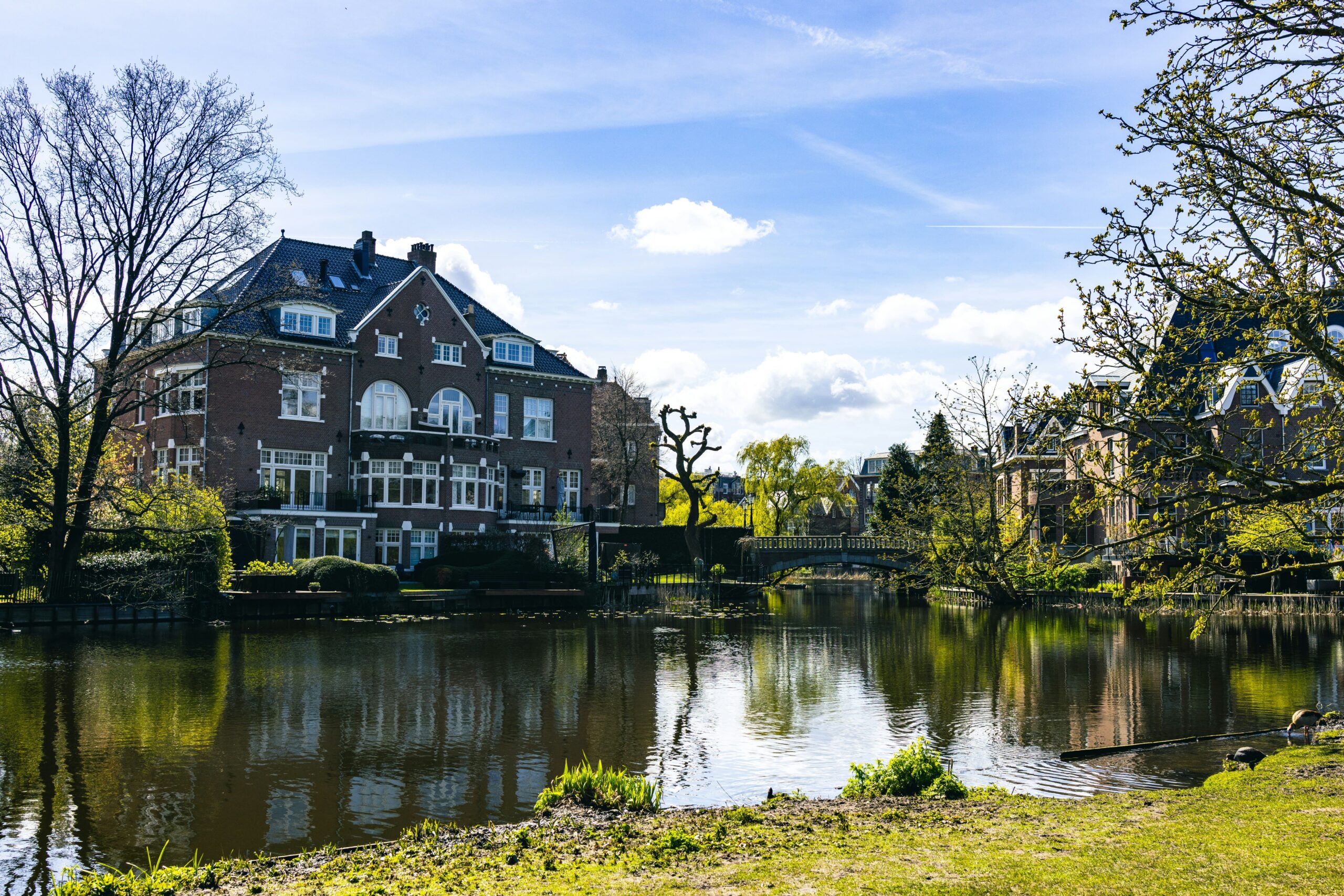
Vondelpark stands as Amsterdam’s largest and most beloved urban park, offering 120 acres of landscaped gardens, ponds, playgrounds, and open spaces. Named after the 17th-century poet Joost van den Vondel, this English-style park attracts over 10 million visitors annually, making it one of the top 10 places to see in Amsterdam, particularly for those seeking respite from urban intensity.
Park History and Design:
Opened in 1865 as “Nieuwe Park,” the space was designed by architects J.D. and L.P. Zocher, who specialized in English landscape gardens. The park was privately funded by wealthy Amsterdammers who wanted a green space for leisure. In 1867, it was renamed Vondelpark after a statue of Joost van den Vondel was placed there.
The park’s design emphasizes naturalistic landscaping with winding paths, irregular pond shapes, varied vegetation, and unexpected vistas. This contrasts with formal French gardens, instead creating an atmosphere of controlled wilderness within the city. In 1996, Vondelpark received national monument status, recognizing its cultural and historical importance.
What to Do in Vondelpark:
Relax and People-Watch: The most popular activity is simply spreading a blanket on the grass and watching Amsterdam life unfold. On sunny days, the park fills with sunbathers, picnickers, students, families, and tourists. The relaxed atmosphere and people-watching opportunities are unparalleled.
Cycling and Walking Paths: Dedicated paths for cycling and walking wind throughout the park, connecting to Amsterdam’s broader cycling network. Renting a bike and cycling through Vondelpark offers a quintessentially Dutch experience. The main path runs the park’s length, while smaller trails lead to quieter corners.
Outdoor Activities: The park contains several playgrounds for children, open areas for ball games, and ponds where ducks, swans, and herons thrive. Runners use the park for training, joggers enjoy the scenery, and yoga practitioners find quiet spots for outdoor practice.
During the summer, free fitness classes, outdoor yoga sessions, and running clubs make use of the park’s space. Check local listings for scheduled activities.
Cultural Attractions:
Open-Air Theatre (Openluchttheater): From June through August, this venue hosts free performances of music, dance, comedy, and children’s entertainment. The varied program includes everything from classical concerts to contemporary dance, world music to DJ sets. Pack a picnic and enjoy evening performances under the sky.
Picasso Sculpture: “The Fish,” a sculpture by Pablo Picasso, stands near the open-air theater, a surprising artwork in this public space.
Blue Tea House (Blauwe Theehuis): This distinctive functionalist building from 1937, designed by H.A.J. Baanders, features a striking circular design with wraparound terraces. The tea house serves as a cafe-restaurant offering breakfast, lunch, dinner, and drinks with lovely park views. Its architectural style represents Amsterdam School and functionalist influences, making it a landmark within the park.
Film Museum EYE (nearby): While not in the park itself, the EYE Filmmuseum sits just north across the IJ river, accessible from near Vondelpark. This striking contemporary building houses the Netherlands’ film institute with screenings, exhibitions, and a waterfront terrace.
Dining and Refreshments:
Beyond the Blue Tea House, Vondelpark offers several dining options:
Vondeltuin: This grand cafe occupies a historic coach house and offers Dutch and international cuisine with park terraces for outdoor dining.
Groot Melkhuis: A family-friendly cafe with a large playground adjacent, making it perfect for families with children. The menu features pancakes, sandwiches, and Dutch cafe standards.
Vertigo: Located in the Film Museum building at the park’s edge, this restaurant-bar offers elevated dining with a cinema-chic atmosphere and terrace overlooking the park.
Various kiosks throughout the park sell ice cream, coffee, snacks, and drinks during warmer months.
Events and Activities:
Throughout the year, Vondelpark hosts various events. King’s Day (April 27th) brings massive celebrations with music stages, markets, and orange-clad revelers. The annual Uitmarkt festival in August previews Amsterdam’s cultural season with free performances.
Summer weekends often feature informal gatherings, drum circles, and spontaneous music performances. The park’s liberal atmosphere means you’ll encounter diverse expressions of Amsterdam culture.
Wildlife and Nature:
Despite being an urban park, Vondelpark supports diverse wildlife. Various duck species, including mallards and Egyptian geese, populate the ponds. Herons fish along the water edges. The park’s mature trees, including oaks, beeches, and plane trees provide habitat for songbirds, parakeets, and squirrels.
Rose gardens bloom abundantly in summer, and throughout the park, seasonal plantings provide color year-round. The naturalistic design includes meadow areas with wildflowers, structured gardens, and wooded sections.
Accessing and Navigating Vondelpark:
Vondelpark has multiple entrances, with the main entrances at Stadhouderskade (near Leidseplein) and at Amstelveenseweg. Smaller entrances dot the perimeter. Tram lines 1, 2, 3, 5, 11, and 12 stop near various park entrances.
The park is open 24 hours, though visiting between dawn and dusk is recommended for safety. Early morning offers peaceful bird watching and fewer crowds, while late afternoon and early evening see the park at its liveliest.
Maps at various entrances show paths, facilities, and points of interest. The park is well-maintained with regular cleaning and security presence.
Amsterdam Travel Tips for Vondelpark:
Bring a blanket or towel for sitting on grass benches fill quickly on nice days. Pack a picnic from Albert Heijn or other nearby grocery stores, or patronize park cafes.
The park is bike-friendly but can get congested, especially where cycling and walking paths intersect. Cyclists should ride cautiously and respect pedestrians.
While generally safe, keep belongings secure and within sight. Opportunistic theft can occur in crowded areas.
During summer evenings, the park stays busy with people enjoying extended daylight. The atmosphere is festive, but it can involve alcohol and cannabis use legal but worth noting for families.
Public restrooms are available at several locations, but can have lines. The cafes offer facilities for patrons.
9. Albert Cuyp Market: Amsterdam’s Largest Street Market
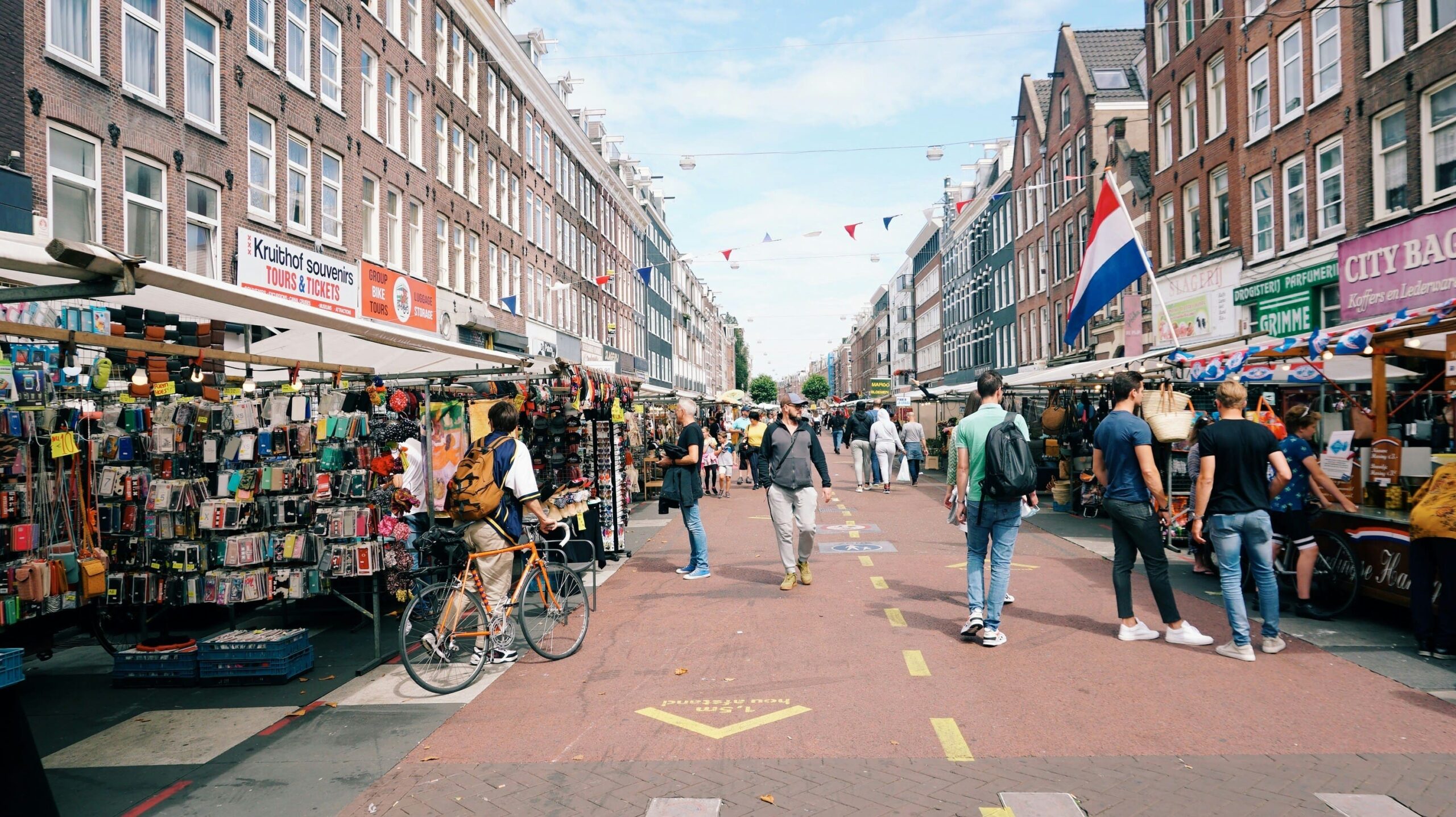
The Albert Cuyp Market, operating since 1905, represents one of Europe’s largest and most vibrant street markets. Stretching nearly a kilometer through Amsterdam’s De Pijp neighborhood, this daily market showcases what to do in Amsterdam for those wanting authentic local experiences beyond tourist attractions. With approximately 260 stalls, the market offers everything from fresh produce and flowers to clothing, street food, and household goods.
The Market Experience:
Walking through Albert Cuyp Market immerses you in working-class Amsterdam culture. The market buzzes with energy as vendors call out prices, locals negotiate deals, and the diverse crowd navigates between stalls. The atmosphere is authentically Dutch, practical, direct, and welcoming without pretense.
The market’s strength lies in its dual nature: serving Amsterdam residents’ daily shopping needs while attracting tourists seeking local flavor. This balance means you’ll find both conventional goods at competitive prices and specialty items catering to food enthusiasts and visitors.
What to Buy and Eat:
Fresh Produce: Fruit and vegetable stalls offer seasonal Dutch produce alongside imported items. Prices are significantly lower than supermarkets, and quality is generally excellent. Vendors often offer samples, and their sales pitches become part of the entertainment.
Cheese: Several stalls specialize in Dutch cheese, with vendors happy to explain differences between young and aged Gouda, demonstrate cheese slicing techniques, and offer generous samples. You can buy vacuum-packed cheese suitable for travel.
Flowers and Bulbs: Flower stalls bring color to the market with fresh-cut flowers, potted plants, and tulip bulbs (in season). Prices are reasonable, making it feasible to brighten your accommodations with fresh flowers.
Herring Stands: Raw herring (haring), served Dutch-style with onions and pickles, is available from traditional fish stands. Watching vendors prepare herring with swift, practiced movements is as interesting as trying this Dutch delicacy.
Stroopwafels: Fresh stroopwafels (syrup waffles) made on-site are substantially better than packaged versions. Watch vendors pour batter into specialized waffle irons, create the thin waffle cookies, slice them horizontally, spread caramel filling, and hand them to you still warm.
Street Food: The market excels in international street food, reflecting Amsterdam’s diversity. Options include Turkish pide and kebabs, Surinamese roti and bara, Italian arancini, Asian noodles and dumplings, and Dutch croquettes and fries. The variety allows sampling global cuisines at market prices.
Clothing and Textiles: Numerous stalls sell clothing ranging from basics to trendy fashion, shoes, fabrics, and accessories. Quality and style vary, but bargains exist for those willing to browse.
The De Pijp Neighborhood:
The market runs through De Pijp, a multicultural neighborhood known for its creative energy and residential character. Originally built in the 19th century as working-class housing, De Pijp has gentrified while maintaining its authentic, diverse character.
Surrounding streets contain independent boutiques, vintage shops, ethnic restaurants, and brown cafes. Ferdinand Bolstraat, running perpendicular to the market, features mainstream shopping. Side streets like Eerste van der Helststraat and Hemonystraat offer quieter exploration.
Sarphatipark: Just south of the market, this small neighborhood park provides a peaceful green space for relaxing after market shopping. The park features a pond, playgrounds, and benches under mature trees.
Heineken Experience: Located a short walk from the market at the original Heineken brewery building, this interactive museum explores the brewing process and brand history. While touristy, it offers an entertaining experience with beer tastings included.
Dining Around Albert Cuyp:
The area surrounding Albert Cuyp Market contains excellent dining options:
De Waaghals: A long-standing organic vegetarian and vegan restaurant serving creative plant-based dishes in a relaxed atmosphere.
Bazar: This popular restaurant occupies a converted church and serves Middle Eastern and North African cuisine at reasonable prices with atmospheric decor.
Café Binnen Buiten: A cozy brown cafe with a friendly local crowd, solid beer selection, and traditional Dutch cafe food.
The White Room (Hotel De Witte Lelie): For upscale dining, this restaurant offers refined cuisine in an elegant setting.
Various ethnic restaurants, Surinamese, Turkish, Indonesian, and Italian, line the streets around the market, offering authentic international cuisines at reasonable prices.
Coffee Culture: De Pijp features excellent coffee shops (cafes, not cannabis establishments). The Scandinavian Embassy focuses on specialty coffee and Scandinavian food. Coffee Bru serves quality coffee in a minimalist space. Lot Sixty One Coffee Roasters (also in Jordaan) has a De Pijp location.
Visiting Practical Information:
The Albert Cuyp Market operates Monday through Saturday from approximately 9:00 AM to 5:00 PM. The market is closed on Sundays. Peak times are Wednesday, Friday, and Saturday mornings when the market is fullest.
The market is located on Albert Cuypstraat between Ferdinand Bolstraat and Van Woustraat. Tram lines 3, 4, 16, and 24 stop nearby at Albert Cuypstraat or Stadhouderskade.
Bring cash, as some vendors accept cards, cash is preferred, and some stalls remain cash-only. ATMs are available nearby.
Watch for pickpockets in crowded areas. Keep bags secured and valuables secure while browsing.
Bring reusable shopping bags for purchases. Most vendors provide bags, but reducing plastic waste is appreciated.
Arrive mid-morning for the best selection and lively atmosphere without extreme crowds. Early afternoon sees fewer crowds buta picked-over selection, especially for fresh produce.
10. Amsterdam Museums Beyond the Big Three
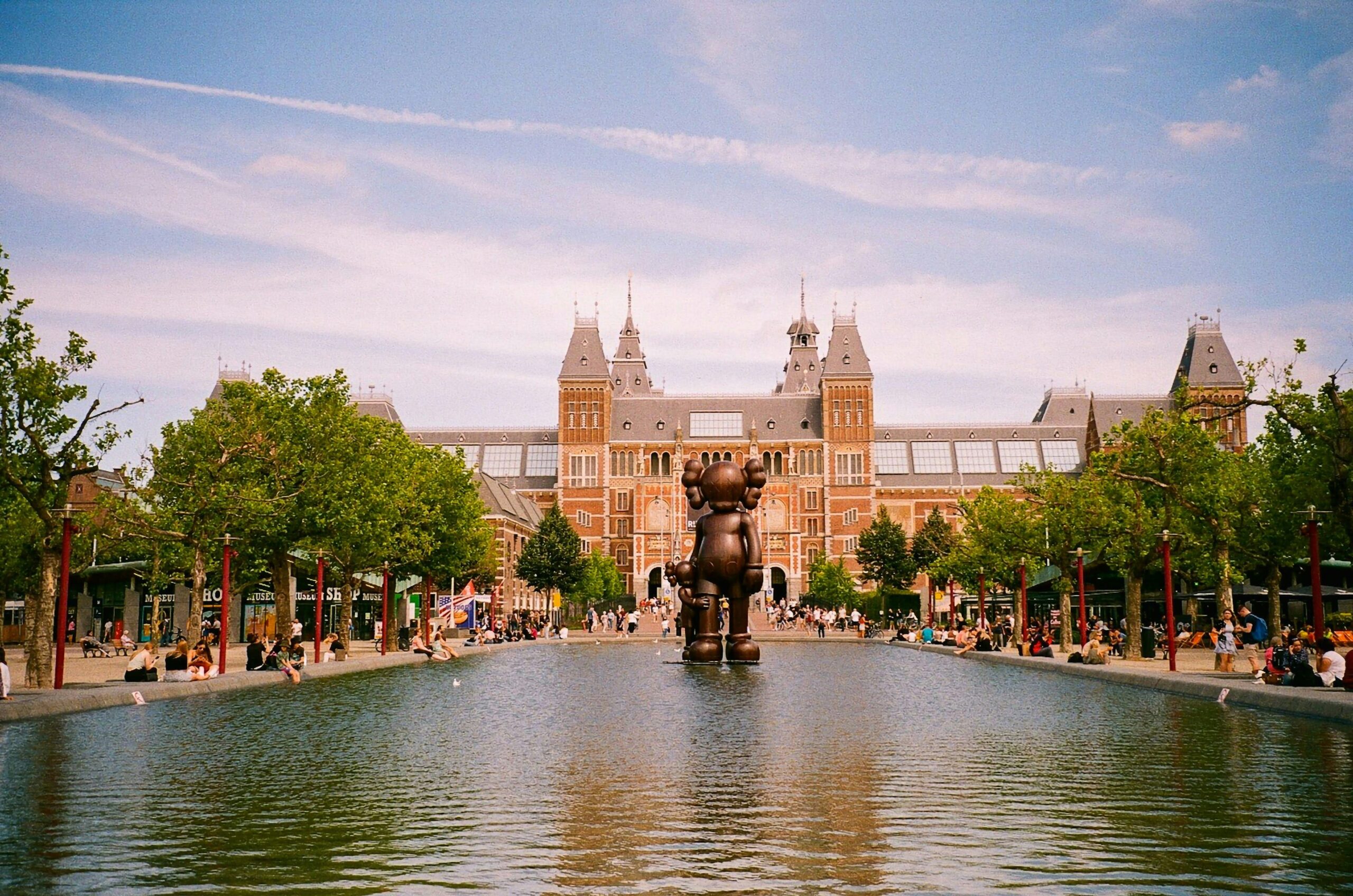
While the Rijksmuseum, Van Gogh Museum, and Anne Frank House rightfully claim spots on any list of top 10 places to visit in Amsterdam, the city offers numerous smaller, specialized museums that rank among the hidden gems in Amsterdam. These institutions provide deep dives into specific aspects of Dutch culture, history, and art.
Stedelijk Museum: Modern and Contemporary Art:
Adjacent to the Rijksmuseum and Van Gogh Museum on Museum Square, the Stedelijk Museum houses the Netherlands’ premier collection of modern and contemporary art. The collection spans 1870 to the present, featuring works by Karel Appel, Piet Mondrian, Kazimir Malevich, Andy Warhol, Jackson Pollock, and countless contemporary artists.
The building itself creates controversy. Its contemporary wing, dubbed “the bathtub” by locals, contrasts sharply with the 19th-century original building. Inside, the Stedelijk balances permanent collection displays with cutting-edge temporary exhibitions exploring contemporary art movements, design, and cultural issues.
The museum’s design collection is particularly strong, featuring furniture, industrial design, and graphic design that trace the evolution of modernism. Photography holdings include works by major international photographers.
Rembrandt House Museum (Museum Het Rembrandthuis):
Rembrandt van Rijn lived and worked in this house from 1639 to 1658, during the peak of his career. The building has been restored to its 17th-century appearance, recreating the artist’s living spaces, studio, and kunstkamer (art cabinet) based on historical inventories.
Walking through Rembrandt’s actual home provides intimate insight into his daily life, working methods, and eventual financial troubles that forced him to leave. The museum demonstrates 17th-century painting techniques and houses a comprehensive collection of Rembrandt’s etchings nearly all his graphic work.
Daily demonstrations show how pigments were ground, canvases prepared, and etchings printed using period-accurate methods. The museum brings Rembrandt alive as a person rather than just a famous name.
Hermitage Amsterdam:
This satellite of St. Petersburg’s State Hermitage Museum occupies a beautifully restored 17th-century building originally built as a home for elderly women (Amstelhof). The museum hosts rotating exhibitions drawing from the Hermitage’s vast collections.
Past exhibitions have covered Russian tsars and tsarinas, Matisse and the Fauves, Dutch Golden Age paintings, and decorative arts. The advantage of rotating exhibitions means fresh content for repeat visitors, while the disadvantage is unpredictability you don’t know in advance exactly what will be on display during your visit.
The building’s architecture, particularly the interior courtyard and chapel, merits attention beyond the exhibitions. A permanent display explains the building’s 300-year history as a charitable institution.
NEMO Science Museum:
Designed by Renzo Piano and shaped like a ship’s prow, NEMO is the Netherlands’ largest science center. The museum makes science accessible through hands-on exhibits exploring physics, biology, chemistry, and technology.
While particularly popular with families, adults without children will find engaging exhibits on topics like human biology, renewable energy, and scientific principles. The rooftop terrace, accessible without museum admission, offers panoramic Amsterdam views and hosts a summer cafe.
Interactive experiments, demonstrations, and exhibits encourage active participation rather than passive observation. You can create chain reactions, explore optical illusions, understand DNA, and experiment with physics principles.
Amsterdam Museum:
This museum tells Amsterdam’s story from its origins as a fishing village through its Golden Age dominance to its contemporary character. Located in a former orphanage building (another historic hofje), the museum uses multimedia displays, artifacts, paintings, and interactive elements to make history engaging.
The museum’s approach is thematic rather than strictly chronological, exploring topics like trade, tolerance, Amsterdam’s relationship with water, and the city’s DNA characteristics that define Amsterdam’s identity.
The free passageway (Schuttersgalerij) displays massive 17th-century group portraits of Amsterdam’s civic guards, similar to Rembrandt’s “Night Watch” but by other artists. You can view these paintings without purchasing museum admission.
Foam Photography Museum:
Located in a canal house on Keizersgracht, Foam (Fotografiemuseum Amsterdam) showcases contemporary photography through rotating exhibitions. The museum presents both emerging photographers and established masters, covering photojournalism, art photography, fashion, and documentary work.
Foam’s international perspective brings photographers from around the world to Amsterdam audiences. The museum’s magazine, Foam Magazine, has become influential in photography circles globally.
The intimate canal house setting creates an interesting dynamic for viewing photography you ascend through multiple floors, each offering different exhibition spaces and viewing experiences.
Tropenmuseum:
The Tropenmuseum (Museum of the Tropics) explores non-Western cultures through its ethnographic collections. Originally promoting Dutch colonialism, the museum has evolved to take critical, nuanced approaches to cultural representation and colonial history.
Permanent exhibitions cover Southeast Asia, West Asia and North Africa, sub-Saharan Africa, and Latin America, displaying objects in cultural context while addressing contemporary issues. Temporary exhibitions explore themes like migration, globalization, and cultural exchange.
The building itself is spectacular, a 1920s Dutch colonial-style palace with a soaring central hall featuring elaborate decorations. The Tropenmuseum provides important perspectives often missing from other Amsterdam museums.
Het Scheepvaartmuseum (National Maritime Museum):
Amsterdam’s maritime history fundamentally shaped the city’s identity and wealth. This museum, housed in a 17th-century naval storehouse, explores Netherlands’ relationship with the sea through ship models, paintings, navigation instruments, and interactive exhibits.
The museum’s crown jewel is the full-scale replica of the Amsterdam, an 18th-century ship of the Dutch East India Company (VOC). You can board the ship, explore below decks, and imagine life as a VOC sailor. The experience brings maritime history to life far better than static displays could.
Exhibitions cover Dutch naval power, Arctic exploration, whaling, colonialism, and contemporary maritime issues. The museum doesn’t shy from addressing the darker aspects of Dutch maritime history, including the slave trade and colonial exploitation.
Museum Willet-Holthuysen:
This canal house museum preserves a wealthy merchant family’s 17th-19th-century home. Unlike museums, where artifacts are displayed in galleries, here you see how wealthy Amsterdammers actually lived. Period rooms showcase furniture, art, china, and decorative objects in a domestic context.
The garden, restored to its 18th-century French formal style, provides a serene escape and demonstrates how canal house gardens functioned as private outdoor rooms. The below-stairs kitchen shows the service side of wealthy households.
Choosing Which Museums to Visit:
Amsterdam contains over 75 museums no one can visit them all in a single trip. Prioritize based on your interests:
- Art lovers: Rijksmuseum, Van Gogh Museum, Stedelijk Museum, Rembrandt House
- History buffs: Amsterdam Museum, Anne Frank House, Maritime Museum, Jewish Historical Museum
- Photography enthusiasts: Foam, Huis Marseille (another photography museum)
- Science and technology: NEMO, Micropia (microorganism museum)
- Families with children: NEMO, Maritime Museum, Tropenmuseum
- Design and architecture: Stedelijk Museum, Museum Ons’ Lieve Heer op Solder
Museum Cards and Discounts:
The Museumkaart (Museum Card) provides free admission to over 400 museums across the Netherlands for one year. At €70 for adults (cheaper for youth), it pays for itself after five or six museum visits. If you’re spending several days museum-hopping, this card offers significant savings.
The I Amsterdam City Card includes admission to many museums plus public transportation. Evaluate whether your planned activities justify this card’s cost.
Many museums offer reduced admission for students, seniors, and children. Some have free or reduced-price hours.
Amsterdam Travel Tips for Museums:
Book tickets online in advance for major museums (Rijksmuseum, Van Gogh Museum, Anne Frank House), as they sell out or have long queues. Smaller museums often allow walk-up entry.
Visit major museums early in the day or during dinner hours (if open late) for smaller crowds. Weekdays are less busy than weekends.
Many museums close on Mondays, though major museums remain open daily. Check specific museums’ schedules.
Museum cafes often offer good food and provide resting spots during marathon museum days. Some, like the Rijksmuseum cafe, are destinations in themselves.
Photography policies vary; check each museum’s rules. Most prohibit flash photography; some prohibit photography entirely.
Amsterdam Travel Tips: Practical Information for Your Visit
Beyond knowing the top 10 places to visit in Amsterdam, successful trips require practical planning. Here’s comprehensive advice for navigating Amsterdam like a local.
When to Visit Amsterdam:
Spring (March-May): Spring, particularly during tulip season (mid-March through mid-May), ranks among the most popular times to visit Amsterdam. The weather becomes pleasant, flowers bloom throughout the city, and Keukenhof Gardens (outside Amsterdam) showcase millions of tulips. King’s Day (April 27th) brings massive celebrations. Book accommodations well in advance for this period.
Summer (June-August): Peak tourist season brings the best weather, longest days, and fullest event calendars. Expect crowds at major attractions and higher prices. The city comes alive with outdoor festivals, canal-side terraces, and open-air events. Book everything in advance.
Autumn (September-November): Autumn offers mild weather, fewer crowds than summer, beautiful foliage, and lower prices. Amsterdam Dance Event (October) attracts electronic music fans worldwide. Museums are more manageable, and the city’s cozy cafe culture becomes particularly appealing as temperatures cool.
Winter (December-February): Winter brings cold, damp weather but fewer tourists, lowest prices, and festive atmosphere. Christmas markets, ice skating, and cozy indoor activities dominate. The Amsterdam Light Festival (late November-mid-January) illuminates canals with art installations. Museums are quietest during this season.
Getting to Amsterdam:
By Air: Amsterdam Airport Schiphol (AMS) ranks among Europe’s major hubs, offering direct flights worldwide. The airport sits just 15 kilometers southwest of the city center.
Trains depart every 10-15 minutes from the airport to Amsterdam Centraal Station (15-20 minutes, approximately €5). This is the most efficient option. Taxis cost €40-50 and take similar time unless arriving very early or late. Private transfers and shuttles are available but unnecessary given excellent train service.
By Train: Amsterdam Centraal Station connects to major European cities via international rail services. Thalys high-speed trains serve Paris and Brussels. Intercity services connect to German cities. Eurostar routes to London require a change in Brussels or Rotterdam.
By Car: Driving in Amsterdam is unnecessary and discouraged. Parking is expensive and scarce, many streets are pedestrianized or bike-only, and public transportation/cycling are more efficient. If arriving by car, park at your hotel and use other transportation methods for sightseeing.
Getting Around Amsterdam:
Walking: Amsterdam’s compact city center is highly walkable. Most major attractions lie within 30 minutes’ walk of each other. Walking allows you to discover hidden courtyards, interesting architecture, and unexpected sights.
Cycling: Amsterdam is the world’s most bike-friendly city. Renting a bicycle offers the most authentic Amsterdam experience. Numerous rental shops offer city bikes, electric bikes, and cargo bikes. Always lock your bike securely. Bicycle theft is common. Follow cycling rules: stay in bike lanes, signal turns, and yield to pedestrians.
Public Transportation: GVB operates Amsterdam’s trams, buses, and metros. The system is efficient, clean, and covers the entire city. Purchase an OV-chipkaart (public transport chip card) or GVB day passes. Multi-day passes offer unlimited travel and eliminate per-trip costs.
Trams are the most useful public transport for tourists lines crisscross the city center. Night buses (nachtbus) operate after regular service ends. The metro primarily serves outer districts but connects Central Station to some areas.
Taxis and Ride-Sharing: Official taxis are regulated, metered, and expensive. Uber operates in Amsterdam. Taxis are unnecessary for most travel within the city center but useful for late-night journeys or when traveling with heavy luggage.
Canal Boats: Water taxis and canal bus services provide scenic transportation along major canals. These cost more than land transport but combine transportation with sightseeing.
Where to Stay in Amsterdam:
City Center: Staying centrally puts major attractions within walking distance but comes with higher prices and tourist crowds. This area suits first-time visitors wanting easy access to everything.
Jordaan: This charming neighborhood offers an authentic Amsterdam atmosphere with canals, boutiques, and excellent restaurants. Slightly quieter than the city center while remaining central.
De Pijp: This multicultural neighborhood south of the center offers local character, the Albert Cuyp Market, and good value. Excellent restaurants and cafes line the streets.
Oud-West: West of the Jordaan, this residential area offers local atmosphere, Vondelpark access, and better value than central neighborhoods.
Amsterdam Noord: Across the IJ river (free ferry from Centraal Station), Noord has developed into a hip area with creative spaces, excellent restaurants, and lower prices. Less convenient for major sights, but it offers a local atmosphere.
Accommodation Types: Amsterdam offers everything from budget hostels to luxury hotels. Canal house hotels provide a historic atmosphere. Houseboats offer unique accommodations on the water. Apartments suit longer stays or families.
What to Eat in Amsterdam:
Dutch cuisine emphasizes comfort food, influenced by the Netherlands’ maritime trade history and colonial past.
Traditional Dutch Foods:
- Bitterballen: Deep-fried meat croquettes served with mustard, typically eaten as bar snacks
- Stamppot: Mashed potato dishes mixed with vegetables, served with sausage or meat
- Haring: Raw herring served with onions and pickles, eaten by holding the fish by its tail and lowering it into your mouth
- Stroopwafels: Thin waffle cookies sandwiched with caramel syrup
- Poffertjes: Small, fluffy pancakes served with powdered sugar and butter
- Cheese: Dutch cheeses, particularly Gouda and Edam, are world-famous
- Hutspot: Mashed potatoes, carrots, and onions, traditionally eaten on October 3rd
- Erwtensoep (Snert): Thick pea soup with smoked sausage
Indonesian Food: Due to colonial history, Indonesian restaurants are ubiquitous in Amsterdam. Rijsttafel (rice table) offers samplers of many Indonesian dishes. This represents some of Amsterdam’s best dining.
International Cuisine: Amsterdam’s multiculturalism means excellent international restaurants representing cuisines worldwide, Surinamese, Turkish, Italian, Japanese, Chinese, Middle Eastern, and more.
Where to Eat:
Brown Cafes (Bruine Kroegen): Traditional Dutch pubs serving beer, spirits, and simple food in atmospheric, wood-paneled spaces. These are Amsterdam institutions.
Restaurants: Range from casual to Michelin-starred. Many excellent mid-range restaurants offer creative cuisine using seasonal, local ingredients.
Street Food: Markets, particularly Albert Cuyp Market, offer excellent street food. Fries (patat) stands serve Dutch-style fries with various sauces.
Cafes: Dutch cafes serve coffee, tea, pastries, sandwiches, and light meals. These provide good spots for breakfast or lunch.
Money and Costs:
Currency: The Netherlands uses the Euro (€). ATMs are widely available. Credit cards are accepted at most restaurants, shops, and attractions, though some smaller establishments prefer cash or debit cards.
Costs: Amsterdam ranks among Europe’s more expensive cities. Budget approximately:
- Budget travelers: €50-80 per day (hostels, street food, limited paid attractions)
- Mid-range travelers: €120-200 per day (moderate hotels, restaurant meals, museum visits)
- Luxury travelers: €250+ per day (upscale hotels, fine dining, private tours)
Tipping: Service charges are included in bills. Tipping is not obligatory, but rounding up or leaving 5-10% for good service is appreciated.
Safety and Practical Concerns:
Amsterdam is generally very safe, with low violent crime rates. Common concerns include:
Bicycle Safety: Watch for bikes constantly. Cycle paths are separate from sidewalks and roads. Never walk in bike lanes. Look before crossing intersections.
Pickpocketing: Crowded tourist areas and public transportation attract pickpockets. Keep valuables secured and be aware of your surroundings.
Drugs: Cannabis is tolerated but technically illegal. Sell drugs or possess hard drugs and face serious legal consequences. Avoid purchasing drugs from street dealers these may be dangerous or illegal substances.
Scams: Common scams include: fake police asking to check wallets, overpriced “tourist menus,” and unofficial tour operators. Book tours and activities through reputable companies.
Water Safety: Canals have no barriers, and the water is cold and murky. Falling in is dangerous. Watch your step, especially after drinking.
Language:
Dutch is the official language, but Amsterdam is highly multilingual. Nearly all Amsterdammers speak excellent English, especially in tourism-related businesses. Service in English is standard, you needn’t worry about language barriers.
Learning a few Dutch phrases (dank u = thank you, alstublieft = please) shows respect, but English will serve you well throughout your visit.
Practical Apps and Resources:
- 9292: Journey planner for all Dutch public transportation
- GVB: Official app for Amsterdam public transport
- Moovit: Alternative transport app with real-time updates
- Google Maps: Reliable for navigation, public transport, and finding businesses
- The Fork: Restaurant reservations with user reviews
- Tikkie: Dutch payment app for splitting bills (requires Dutch bank account)
Hidden Gems in Amsterdam: Beyond the Famous Attractions
While the top 10 places to visit in Amsterdam cover major highlights, the city rewards deeper exploration. These lesser-known attractions offer authentic experiences away from tourist crowds.
Begijnhof:
This enclosed courtyard in the city center, dating to medieval times, housed a community of Beguines, lay religious women who lived in a semi-monastic community. Today, the Begijnhof remains home to single women, but visitors can respectfully enter during daytime hours.
The tranquil courtyard, surrounded by historic houses and two churches, feels worlds away from the bustling streets just outside. The wooden house (Het Houten Huis) is Amsterdam’s oldest surviving wooden house, dating to around 1420. This hidden oasis offers peaceful reflection in central Amsterdam.
Amsterdam’s Hofjes:
Beyond the Begijnhof, Amsterdam contains over 40 hofjes, almshouse courtyards built by wealthy merchants, guilds, or religious organizations to house elderly or poor citizens. Many still function as social housing.
While these are private residences, several allow respectful daytime visitors. The courtyards offer glimpses into Amsterdam’s social history and provide peaceful sanctuaries. Notable hofjes include Van Brienenhofje, Suykerhofje, and those in the Jordaan mentioned earlier.
Electric Ladyland:
The world’s first museum of fluorescent art occupies a basement space in the Jordaan. This quirky museum showcases fluorescent minerals, psychedelic art installations, and glowing artworks. The owner’s passion for fluorescent art is infectious, making this unique museum a truly hidden gem.
Brewery ‘t IJ:
Located beneath a historic windmill (De Gooyer), this craft brewery produces organic beers and operates a popular tasting room. Visiting combines sampling excellent craft beers with seeing a working windmill in urban Amsterdam. The outdoor picnic tables create a convivial atmosphere on nice days.
Amsterdam Pipe Museum:
This small museum in the Jordaan documents the history of pipes and tobacco use across cultures and centuries. The collection includes thousands of pipes from various materials, regions, and eras. It’s specific and unusual enough to count as a genuine hidden gem.
Café Katoen:
This tiny brown cafe, perhaps Amsterdam’s smallest, embodies the old Amsterdam atmosphere. With room for maybe 20 people, it maintains an authentic character without tourist pretense. Finding it feels like discovering a local secret.
Westerpark and Westergasfabriek:
This former gasworks has been transformed into a cultural complex with restaurants, cafes, performance spaces, and creative businesses. The surrounding Westerpark offers green space, playgrounds, and cultural events. The area attracts more locals than tourists, providing an authentic Amsterdam atmosphere.
Hortus Botanicus:
One of the world’s oldest botanical gardens, established in 1638, this garden contains thousands of plant species in outdoor gardens and specialized greenhouses. The tropical palm house, desert house, and butterfly house create diverse environments. The garden offers a peaceful retreat and fascinating plant collections.
Amsterdam Bos (Amsterdam Forest):
This massive park (three times larger than Central Park) on Amsterdam’s southern edge offers extensive biking and walking paths, lakes, forests, and recreational facilities. Rent bikes, canoes, or rowboats, visit the goat farm, or simply escape urban intensity. The forest is beloved by locals but unknown to most tourists.
Museum De Dageraad:
This museum in the De Dageraad housing complex showcases Amsterdam School architecture. The complex, built in the 1920s, represents idealistic social housing with remarkable architectural detailing. Guided tours explain the architectural movement and social history.
Frequently Asked Questions About Visiting Amsterdam
What is the most visited place in Amsterdam?
The most visited place in Amsterdam is the Anne Frank House, which receives over 1.3 million visitors annually. This historic canal house, where Anne Frank and her family hid from Nazi persecution during World War II, has become one of the world’s most important Holocaust memorials and museums. The house draws visitors from around the globe who come to see the Secret Annex where Anne wrote her famous diary and to learn about this tragic period of history. Due to its immense popularity, tickets must be booked online several weeks in advance, as they consistently sell out. The museum’s powerful combination of historical significance, personal storytelling, and preserved authenticity explains why it tops the list of Amsterdam’s most visited attractions, surpassing even the Rijksmuseum and Van Gogh Museum in visitor numbers.
What not to miss when in Amsterdam?
When visiting Amsterdam, you absolutely cannot miss experiencing the city’s iconic canal system, whether by taking a canal cruise, walking alongside the waterways, or renting a boat to explore at your own pace. The canal ring is a UNESCO World Heritage site and defines Amsterdam’s character. You also shouldn’t miss the Rijksmuseum, which houses masterpieces like Rembrandt’s “The Night Watch” and represents Dutch Golden Age art at its finest. The Anne Frank House provides a moving, essential history lesson that contextualizes World War II and the Holocaust in a deeply personal way.
Beyond these famous attractions, don’t miss simply cycling through Amsterdam like a local, renting a bike, and navigating the city’s extensive cycling infrastructure offers an authentic Dutch experience. The Jordaan neighborhood, with its charming canals, independent shops, and local cafes, shouldn’t be overlooked in favor of more famous districts. Finally, don’t miss trying traditional Dutch foods like herring, stroopwafels, and bitterballen, preferably from street vendors or local markets like Albert Cuyp Market. These experiences collectively capture Amsterdam’s essence far better than any single attraction could.
Where is the prettiest place in Amsterdam?
The prettiest place in Amsterdam is arguably the “Seven Bridges” viewpoint at the intersection of Reguliersgracht and Herengracht, particularly during twilight or evening when the canal bridges are illuminated. From this spot, you can see seven arched bridges aligned in perspective, their lights reflecting in the calm canal water, a scene that epitomizes Amsterdam’s romantic, fairy-tale atmosphere. This view has been photographed countless times, yet it never loses its magic.
However, Amsterdam’s beauty appears throughout the city. The Jordaan neighborhood, especially along Bloemgracht and Egelantiersgracht, features charming narrow canals lined with leaning gabled houses, houseboats, and flower boxes. The Begijnhof courtyard offers tranquil beauty hidden in the city center, with its historic houses surrounding a peaceful green space. Vondelpark in spring, when flowers bloom and trees turn green, creates a beautiful natural scenery within the urban environment. Brouwersgracht, where seven canals intersect, provides layered views of bridges, historic warehouses, and houseboats that showcase Amsterdam’s unique aquatic character. Beauty in Amsterdam is subjective and omnipresent; the entire canal ring could claim the title of “prettiest place.”
What part of Amsterdam is best to visit?
The best part of Amsterdam to visit depends on your interests, but the Canal Ring (Grachtengordel) combined with the Jordaan neighborhood, offers the most comprehensive and authentic Amsterdam experience. This area encompasses the iconic UNESCO-protected canals Singel, Herengracht, Keizersgracht, and Prinsengracht, lined with 17th-century gabled houses, alongside the charming Jordaan with its narrow streets, independent boutiques, cozy cafes, and local atmosphere.
For first-time visitors, staying and exploring around the Canal Ring provides access to major attractions like the Anne Frank House, the Nine Streets shopping district, and beautiful canal architecture, while the Jordaan offers authentic neighborhood character away from the most touristy areas. This combination allows you to experience both Amsterdam’s iconic sights and its everyday life.
Museum lovers should focus on Museumplein (Museum Square), where the Rijksmuseum, Van Gogh Museum, and Stedelijk Museum cluster together, with Vondelpark adjacent for relaxation between cultural visits. The De Pijp neighborhood offers multicultural Amsterdam with the Albert Cuyp Market, diverse restaurants, and a more residential feel that shows how contemporary Amsterdammers actually live. For nightlife and entertainment, Leidseplein and Rembrandtplein districts feature concentrated bars, clubs, and theaters.
Each area has a distinct character, but the Canal Ring and Jordaan combination provides the most balanced introduction to Amsterdam’s beauty, history, culture, and contemporary life.
Seasonal Highlights: What to Do in Amsterdam Throughout the Year
Amsterdam’s appeal extends across all seasons, with each period offering unique experiences and atmosphere.
Spring in Amsterdam (March-May):
Spring transforms Amsterdam into a flowering wonderland. This season brings some of the city’s most beautiful weather and celebrated events.
Tulip Season: From mid-March through mid-May, tulips bloom throughout Amsterdam in parks, gardens, and markets. The nearby Keukenhof Gardens (about 30 minutes from Amsterdam) showcase over seven million tulips, daffodils, and hyacinths across 79 acres. The gardens open only during spring (late March to mid-May), making this a limited-time experience. In Amsterdam proper, the Bloemenmarkt (Flower Market) overflows with tulip bulbs and fresh flowers.
King’s Day (Koningsdag – April 27): The Netherlands’ national holiday, celebrating King Willem-Alexander’s birthday, turns Amsterdam into an orange-clad party. The entire city becomes a festival with street markets (vrijmarkt), concerts, boat parties, and celebrations. Locals dress in orange, the royal family’s color, and millions of people flood the streets and canals. This is Amsterdam’s biggest party, but also its most crowded day. Book accommodations far in advance if visiting during King’s Day.
Liberation Day (Bevrijdingsdag – May 5): This national holiday commemorates the end of Nazi occupation in 1945. Free music festivals occur in Vondelpark and other locations, creating a festive atmosphere with cultural performances.
Spring Weather: Temperatures range from 10-17°C (50-63°F). The weather can be unpredictable with rain showers, so bring layers and waterproof clothing. Days lengthen significantly, with increasing sunlight creating cheerful atmospheres.
Summer in Amsterdam (June-August):
Summer brings Amsterdam’s warmest weather, longest days, and fullest event calendar, along with peak tourist crowds.
Festival Season: Summer explodes with festivals. Amsterdam Roots Festival (June/July) celebrates world music and culture. Holland Festival presents performing arts. Grachtenfestival (Canal Festival) features classical music concerts on floating stages. Open-air cinema and theater performances occur throughout the city.
Pride Amsterdam (Early August): One of Europe’s largest LGBTQ+ pride celebrations culminates in the Canal Parade boats decorated with rainbow colors cruise the canals carrying partygoers and performers. The entire city celebrates with parties, events, and inclusive festivities reflecting Amsterdam’s tolerant character.
Terrace Culture: Summer transforms Amsterdam as outdoor terraces fill sidewalks and canal sides. Cafes and restaurants extend onto streets, creating an al fresco dining culture. Enjoying drinks or meals on canal-side terraces becomes a defining summer activity.
Uitmarkt (Late August): This free three-day cultural festival previews Amsterdam’s upcoming theater, music, and cultural season. Stages throughout the city center host performances, and cultural institutions offer free or discounted access.
Beach Clubs: Temporary urban beaches pop up around Amsterdam, with sand, lounge chairs, and beach bars creating seaside atmospheres within the city. Blijburg aan Zee, an actual beach on an artificial island (IJburg), is accessible by bike or public transport.
Summer Weather: Temperatures range from 17-22°C (63-72°F), occasionally reaching higher. Days are long, with sunset around 10 PM in midsummer. Rain remains possible. Amsterdam’s maritime climate means the weather can change quickly.
Autumn in Amsterdam (September-November):
Autumn offers arguably the best time to visit Amsterdam pleasant weather, fewer crowds, and beautiful seasonal changes.
Amsterdam Dance Event (ADE – October): The world’s largest electronic music festival and conference transforms Amsterdam into a five-day celebration of dance music. Hundreds of venues host events, and club culture dominates. Even if you’re not attending conferences, the city pulses with energy and musical performances.
Museum Season: As the weather cools and tourists thin, museums become more manageable. Autumn is ideal for extensive museum visiting without summer’s overwhelming crowds. Museums often launch new exhibitions in autumn.
Fall Foliage: Parks turn golden and russet as leaves change color. Vondelpark, Amsterdam Bos, and canal-side trees create beautiful autumn scenes. The softer, golden autumn light provides excellent conditions for photography.
Cozy Cafe Culture: As temperatures drop, Amsterdam’s brown cafes and cozy restaurants become particularly inviting. The Dutch concept of “gezelligheid” (coziness, conviviality) comes into its own during autumn evenings.
Autumn Weather: September remains pleasant (14-19°C/57-66°F), while October and November cool significantly (8-14°C/46-57°F). Rain becomes more frequent, and days shorten noticeably. November can feel quite gray and damp, but this creates atmospheric, moody Amsterdam scenes.
Winter in Amsterdam (December-February):
Winter brings cold, damp weather but also magical atmosphere, festive celebrations, and the lowest tourist numbers.
Amsterdam Light Festival (Late November-Mid January): International artists create light installations along Amsterdam’s canals, turning the waterways into an illuminated open-air gallery. Special evening cruises showcase these artworks, creating magical winter experiences. Walking routes allow viewing installations from the canal sides.
Holiday Season: December transforms Amsterdam with Christmas markets, ice skating rinks, and festive decorations. The Rijksmuseum and Museumplein host ice skating. Christmas markets sell crafts, seasonal foods, and mulled wine. Dutch holiday traditions include Sinterklaas (St. Nicholas Day, December 5), which is more significant than Christmas for many Dutch people.
New Year’s Eve: Amsterdam’s New Year’s celebration is intense, with massive fireworks displays (often illegally large) creating a spectacular but chaotic atmosphere. The city essentially becomes a war zone of fireworks, exciting but potentially overwhelming or dangerous. Many Amsterdam residents leave the city for New Year’s Eve.
Indoor Cultural Activities: Winter is perfect for marathon museum days, concert hall performances, and cozy restaurant meals. The city’s cultural institutions offer extensive programming, and the lack of weather-dependent activities means you can focus entirely on indoor attractions.
Winter Weather: Temperatures range from 2-6°C (36-43°F). While rarely extremely cold, the damp cold feels penetrating. Rain is frequent, and occasional snow creates beautiful scenes, though it rarely accumulates significantly. Canals occasionally freeze enough for skating, a magical but rare occurrence.
Amsterdam Shopping: From Markets to Designer Boutiques
Amsterdam offers shopping experiences ranging from street markets and vintage stores to luxury boutiques and Dutch design shops.
Shopping Districts:
The Nine Streets (De Negen Straatjes): This grid of nine interconnected streets between major canals features over 200 independent shops, galleries, and cafes. Vintage clothing, jewelry, homeware, specialty foods, and unique boutiques predominate. This area exemplifies Amsterdam’s independent shopping scene, with curated stores offering items you won’t find elsewhere.
P.C. Hooftstraat: Amsterdam’s luxury shopping street features international designer brands Chanel, Louis Vuitton, Hermès, Gucci, alongside upscale Dutch retailers. This is Amsterdam’s equivalent to Paris’s Avenue Montaigne or London’s Bond Street.
Kalverstraat and Nieuwendijk: These pedestrianized streets offer mainstream shopping with international chains, department stores, and high-street fashion brands. Less characterful than other shopping areas, but convenient for practical purchases.
Utrechtsestraat: This street features a mix of boutiques, antique shops, galleries, and specialty stores with less tourist traffic than central shopping streets.
Haarlemmerstraat/Haarlemmerdijk: This long street in the Jordaan’s northern edge combines local shops, specialty food stores, international cuisine restaurants, and quirky boutiques serving neighborhood residents and savvy visitors.
Markets:
Albert Cuyp Market: Already covered in detail, this is Amsterdam’s largest daily market for food, clothing, and household goods.
Bloemenmarkt (Flower Market): The world’s only floating flower market stretches along the Singel canal. While touristy, it offers tulip bulbs (with phytosanitary certificates for international travel), fresh-cut flowers, and plant supplies.
Waterlooplein Flea Market: This daily market near Rembrandt House Museum sells vintage clothing, antiques, curiosities, records, and collectibles. Quality varies tremendously, but dedicated browsing can uncover treasures.
Noordermarkt: Saturday’s organic farmers’ market offers local produce, artisanal products, and prepared foods. Monday’s flea market features vintage goods and antiques.
IJ-Hallen: This massive monthly flea market in Amsterdam Noord is Europe’s largest. Held once or twice monthly in a huge warehouse, it features over 750 vendors selling vintage clothing, furniture, records, books, and every imaginable secondhand item. Serious treasure hunters dedicate entire days to exploring.
Dutch Design and Souvenirs:
Amsterdam excels in design, with numerous shops showcasing Dutch creativity.
Royal Delft and Other Delftware: Traditional blue-and-white Delftware ceramics make classic Dutch souvenirs. While much sold in tourist shops is mass-produced abroad, shops like Royal Delft and galleries in the Nine Streets offer authentic Dutch-made ceramics.
Cheese: Dutch cheese makes an excellent edible souvenir. Vacuum-packed aged Gouda travels well. Specialist cheese shops offer tastings and expert advice.
Jenever (Dutch Gin): This traditional Dutch spirit predates London gin. Specialist liquor stores offer various styles and brands.
Dutch Design Objects: HEMA, a Dutch department store chain, offers affordable, well-designed household goods, stationery, and gifts. Droog and other design shops showcase higher-end contemporary Dutch design.
Tulip Bulbs: If visiting during bulb season, purchase tulip bulbs from reputable suppliers who provide phytosanitary certificates required for export to many countries.
Bicycles and Bicycle Accessories: For longer-term visitors or those able to transport them, Dutch bicycles represent the pinnacle of bicycle design.
Books: Amsterdam’s many bookshops include specialists in art, photography, architecture, and design. The American Book Center offers the largest English-language selection.
Amsterdam Nightlife and Entertainment
Amsterdam offers vibrant nightlife spanning traditional brown cafes, sophisticated cocktail bars, pumping nightclubs, and cultural performances.
Brown Cafes (Bruine Kroegen):
These traditional Dutch pubs form Amsterdam’s social heart. Named for tobacco-stained wood interiors, brown cafes serve beer (both Belgian and Dutch varieties), spirits, and simple food in a convivial atmosphere. Conversations flow, strangers become friends, and hours disappear. Notable brown cafes include Café Hoppe (since 1670), In ‘t Aepjen (in a 15th-century building), and Café Papeneiland (since 1642).
Cocktail Bars:
Amsterdam’s cocktail scene has exploded in recent years. Tales & Spirits crafts creative cocktails in intimate surroundings. Door 74 (a speakeasy requiring reservations) serves exceptional drinks in an exclusive atmosphere. Hiding in Plain Sight creates inventive cocktails. Vesper Bar channels 1920s glamour. These venues represent Amsterdam’s sophisticated drinking culture.
Nightclubs and Electronic Music:
Amsterdam ranks among Europe’s electronic music capitals. Clubs range from underground warehouses to polished venues:
De School: In a converted school building, this club and cultural space hosts cutting-edge electronic music with world-class DJs. Its restaurant, cafe, and gym create a broader cultural complex.
Shelter: Located beneath Amsterdam Noord’s A’DAM Tower, this underground bunker club hosts marathon DJ sets, sometimes running 12+ hours.
Melkweg and Paradiso: These iconic venues in converted industrial spaces host concerts, club nights, and cultural events across multiple stages.
Club AIR: A more commercial superclub featuring international DJs and light shows.
Electronic music permeates Amsterdam’s cultural identity, particularly during Amsterdam Dance Event, when the entire city becomes a playground for dance music fans.
Live Music Venues:
Beyond electronic music, Amsterdam offers diverse live music:
Concertgebouw: This world-renowned concert hall, known for its extraordinary acoustics, hosts classical music performances by top orchestras and soloists.
Muziekgebouw aan ‘t IJ: This contemporary music venue on the IJ waterfront presents avant-garde, experimental, and contemporary classical music.
Bitterzoet, Paradiso, and Melkweg: These venues host rock, indie, pop, and alternative acts ranging from emerging artists to established names.
Jazz Cafes: Bourbon Street, Bimhuis, and smaller venues host jazz performances in intimate settings.
Theater and Performance:
Dutch theater productions perform in Dutch, limiting accessibility for non-speakers. However, several theaters offer English-language performances:
Boom Chicago: This American comedy theater company performs improvisational comedy and sketches in English, often satirizing Dutch and American culture.
International Theater Amsterdam (ITA): Occasionally hosts English-language performances or productions with surtitles.
Comedy Cafe: Stand-up comedy in English occurs regularly.
Cannabis Culture:
Amsterdam’s famous coffee shops (cannabis cafes) sell marijuana and hashish legally for personal consumption. These range from tourist-oriented establishments blasting Bob Marley to quiet, locals-focused cafes.
The Bulldog, Greenhouse, and Dampkring are famous among tourists. Locals often prefer smaller, quieter establishments. Remember that while tolerated, cannabis remains technically illegal; coffee shops operate under strict regulations. Don’t smoke in public spaces outside designated areas, and never combine cannabis with alcohol if you’re inexperienced.
Red Light District Nightlife:
Beyond sex work, the Red Light District contains numerous bars and clubs, some reputable and others best avoided. Exercise caution, avoid aggressive touts, and stay aware of your surroundings.
Day Trips from Amsterdam: Exploring Beyond the City
Amsterdam’s central location makes it an excellent base for exploring the Netherlands and nearby Belgium.
Zaanse Schans (30 minutes):
This open-air museum preserves historic windmills, traditional crafts, and a Dutch countryside atmosphere. While touristy, it offers genuine windmills (still functioning), cheese-making demonstrations, clog workshops, and picturesque Dutch scenery. The village showcases 17th-19th-century Dutch rural life and architecture.
Haarlem (20 minutes):
This charming city features a beautiful medieval center, excellent museums (Frans Hals Museum), a lovely market square, and a quieter atmosphere than Amsterdam. Haarlem offers similar canal-side charm with fewer tourists. The city makes an excellent half-day or full-day trip.
Keukenhof Gardens (40 minutes, Spring only):
Open only during spring (late March-mid May), these gardens showcase over seven million tulips, daffodils, and hyacinths. The spectacular displays make this the world’s most beautiful spring garden. Visit on weekdays if possible to avoid peak crowds.
Volendam and Marken (30-40 minutes):
These traditional fishing villages north of Amsterdam preserve old Dutch character with colorful wooden houses, traditional dress (occasionally still worn), and waterfront settings. While tourists, they offer authentic glimpses of Dutch maritime heritage. Volendam features seafood restaurants, and Marken is accessible by boat in summer.
Utrecht (30 minutes):
The Netherlands’ fourth-largest city features a beautiful medieval center, unique canal-side wharves, the Dom Tower the tallest church tower in the Netherlands), and a vibrant university atmosphere. Utrecht offers Amsterdam’s charm with fewer tourists and a distinct character.
The Hague (50 minutes):
The Netherlands’ seat of government houses the royal family’s working palace, international courts, government ministries, and excellent museums. The Mauritshuis museum displays Vermeer’s “Girl with a Pearl Earring” and other Dutch Golden Age masterpieces. Nearby Scheveningen offers a North Sea beach.
Delft (60 minutes):
This beautiful small city, famous for Delftware ceramics, features canals, historic architecture, and associations with Vermeer and the royal family. The Royal Delft factory offers tours showing traditional ceramic production. Delft’s compact, well-preserved center makes it ideal for half-day trips.
Rotterdam (60 minutes):
The Netherlands’ second city contrasts sharply with Amsterdam. Bombed flat during World War II, Rotterdam was rebuilt with cutting-edge modern architecture. The city features bold contemporary buildings, Europe’s largest port, innovative urban design, and excellent museums. Rotterdam appeals to architecture and design enthusiasts.
Bruges, Belgium (3 hours):
While farther, the medieval city of Bruges makes a feasible day trip. This extraordinarily preserved medieval city features canals, Gothic architecture, chocolate shops, and a fairy-tale atmosphere. Bruges is one of Europe’s most beautiful cities and is worth the journey.
Giethoorn (2 hours):
Called the “Venice of the Netherlands,” this village in the countryside has no roads in its old center; transport is by boat through canals connecting thatched-roof farmhouses. While very touristic, it offers unique Dutch scenery.
Sustainable and Responsible Tourism in Amsterdam
Amsterdam faces significant overtourism challenges, with the city’s popularity straining infrastructure and affecting residents’ quality of life. Responsible visitors can minimize their impact.
Respect Local Life:
Remember that Amsterdam is home to 850,000 residents, not an adult theme park. The city’s liberal policies regarding drugs and prostitution reflect Dutch pragmatism and tolerance, not an invitation for excess. Residential neighborhoods deserve respect, keep noise down, don’t litter, and remember, people live and work in these beautiful canal houses.
Choose Sustainable Transportation:
Walk, cycle, or use public transportation rather than taxis or cars. Amsterdam’s compact size makes these options efficient and enjoyable. Cycling particularly offers an authentic Amsterdam experience while producing zero emissions.
Support Local Businesses:
Patronize independent shops, restaurants, and hotels rather than international chains. Shop at neighborhood markets, eat at locally-owned restaurants, and choose smaller hotels or apartments over massive international chains. Your spending directly supports Amsterdam’s economy and character.
Avoid Overcrowded Hotspots:
Visit lesser-known neighborhoods and attractions instead of concentrating solely on the most famous sites. Explore Amsterdam Noord, Oost, or West for an authentic local atmosphere. Visit major museums during off-peak hours. Consider visiting during the shoulder seasons rather than peak summer.
Respect the Red Light District:
If visiting, remember sex workers are conducting legal business and deserve dignity and safety. Never photograph them. Understand that over-tourism has made this area increasingly difficult for workers and residents.
Be Water-Conscious:
While the Netherlands has good water infrastructure, be mindful of water use in accommodations.
Minimize Plastic Use:
Bring reusable water bottles, shopping bags, and coffee cups. Many cafes offer discounts for bringing your own cup. Refuse single-use plastics when possible.
Follow Cannabis Rules:
If visiting coffee shops, understand the rules: no selling to minors, maximum 5 grams per transaction, no hard drugs, no advertising visible from outside, and no causing a nuisance. Don’t consume cannabis in public spaces outside designated areas.
Making the Most of Your Amsterdam Visit
Amsterdam’s compact size, extraordinary cultural wealth, beautiful architecture, and unique character make it one of Europe’s most rewarding cities to explore. Whether you’re drawn by world-class museums, historic canals, vibrant neighborhoods, or liberal culture, Amsterdam offers experiences that satisfy diverse interests.
The top 10 places to visit in Amsterdam, covered in this guide, Anne Frank House, Rijksmuseum, Van Gogh Museum, the canals, Jordaan, Dam Square, the Red Light District, Vondelpark, Albert Cuyp Market, and Amsterdam’s diverse museums, provide a foundation for understanding this remarkable city. However, Amsterdam’s true magic often reveals itself in unexpected moments: stumbling upon a hidden courtyard, watching canal reflections at twilight, conversing with locals in a brown cafe, or cycling through quiet neighborhoods.
Plan your itinerary around major attractions, but leave room for spontaneous exploration. Amsterdam rewards wanderers who venture beyond guidebook prescriptions. The city’s layers of medieval origins, Golden Age wealth, wartime tragedy, postwar tolerance, and contemporary challenges create a complex, fascinating character impossible to fully capture in any single visit.
Whether spending a weekend or several weeks, Amsterdam offers enough variety and depth to satisfy any traveler. Use this guide as a starting point, but create your own Amsterdam story through the choices you make and the discoveries you encounter. This city of canals, bicycles, art, and tolerance awaits your exploration.
Final Amsterdam Travel Tips:
- Book major museum tickets and the Anne Frank House well in advance
- Rent a bicycle for at least one day to experience Amsterdam properly
- Take a canal cruise at sunset or evening for magical perspectives
- Venture beyond the city center to discover neighborhood character
- Try traditional Dutch foods and Indonesian cuisine
- Visit during shoulder seasons for better weather, fewer crowds, and lower prices
- Respect local life and Amsterdam’s residents
- Walk or cycle along canals rather than just photographing them
- Allow time for simply sitting in cafes and absorbing the atmosphere
- Don’t try to see everything. Amsterdam rewards depth over breadth
Amsterdam captivates visitors not through spectacular monuments or dramatic landscapes but through livable beauty, cultural richness, and human-scale urbanism. It’s a city that invites you to slow down, notice details, and appreciate the quality of life. Whether this is your first visit or your tenth return, Amsterdam continues to reveal new facets and hidden treasures.
The top 10 places to see in Amsterdam highlighted here will introduce you to the city’s highlights, but the real Amsterdam emerges through accumulated experiences, the play of light on canal water, the ring of bicycle bells, the taste of stroopwafel, the sanctuary of a hidden courtyard, and the conversations with strangers who become friends. Amsterdam is ultimately about quality over quantity, tolerance over judgment, and living well over living large.
Start with this guide’s suggestions, then let Amsterdam surprise you. The city has been welcoming visitors for centuries and knows how to create memorable experiences. Your Amsterdam story awaits. Make it uniquely yours

